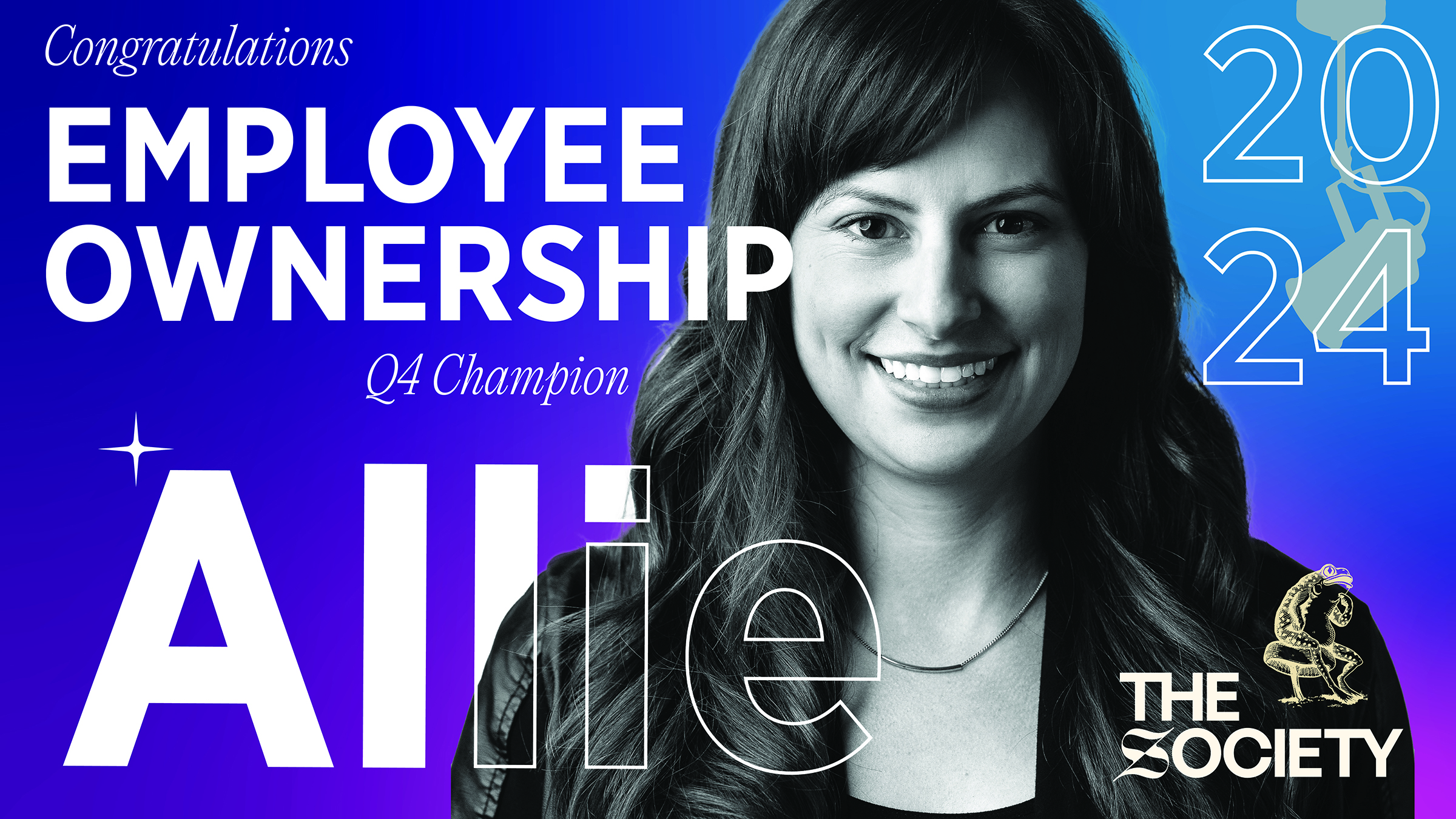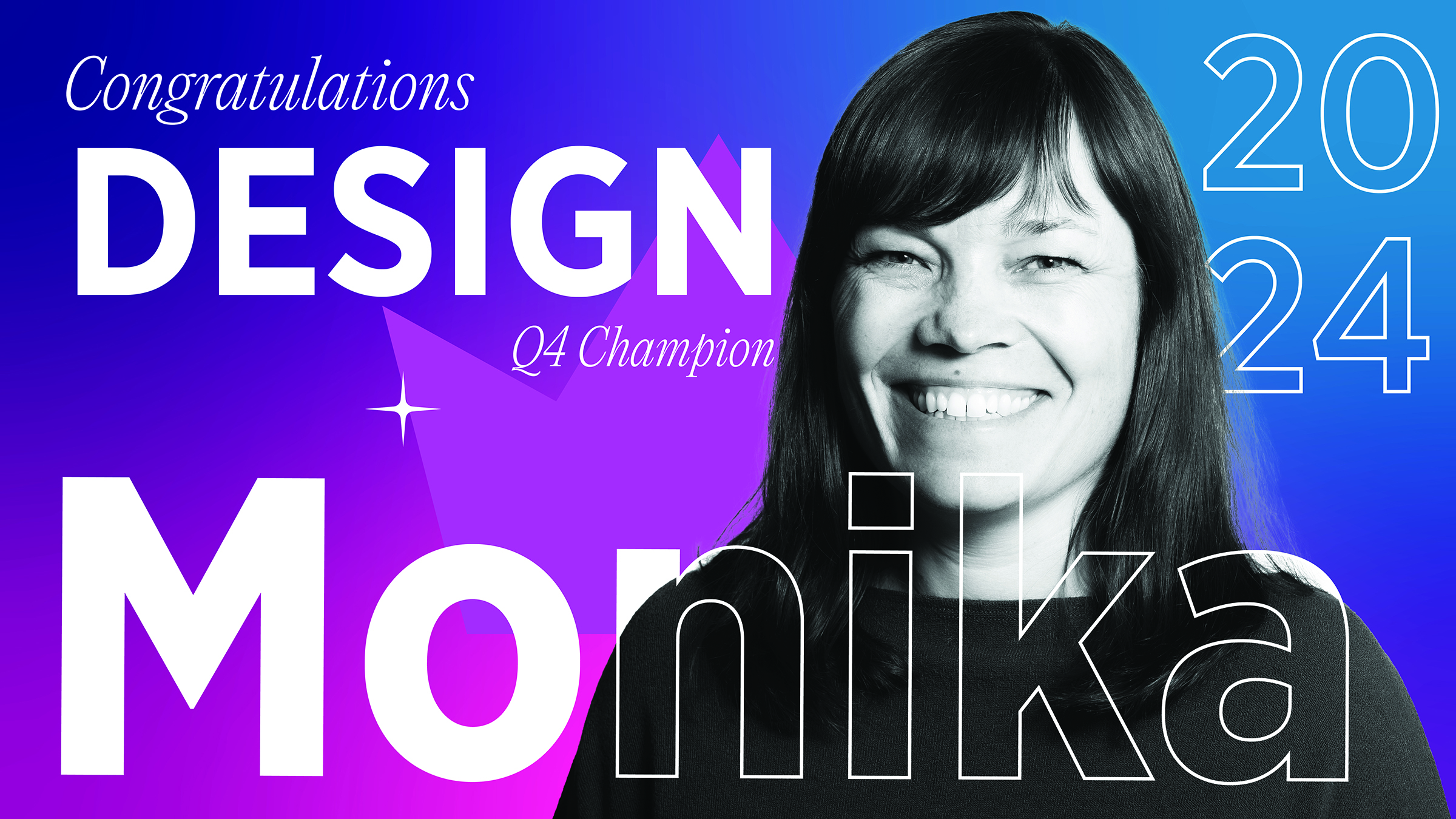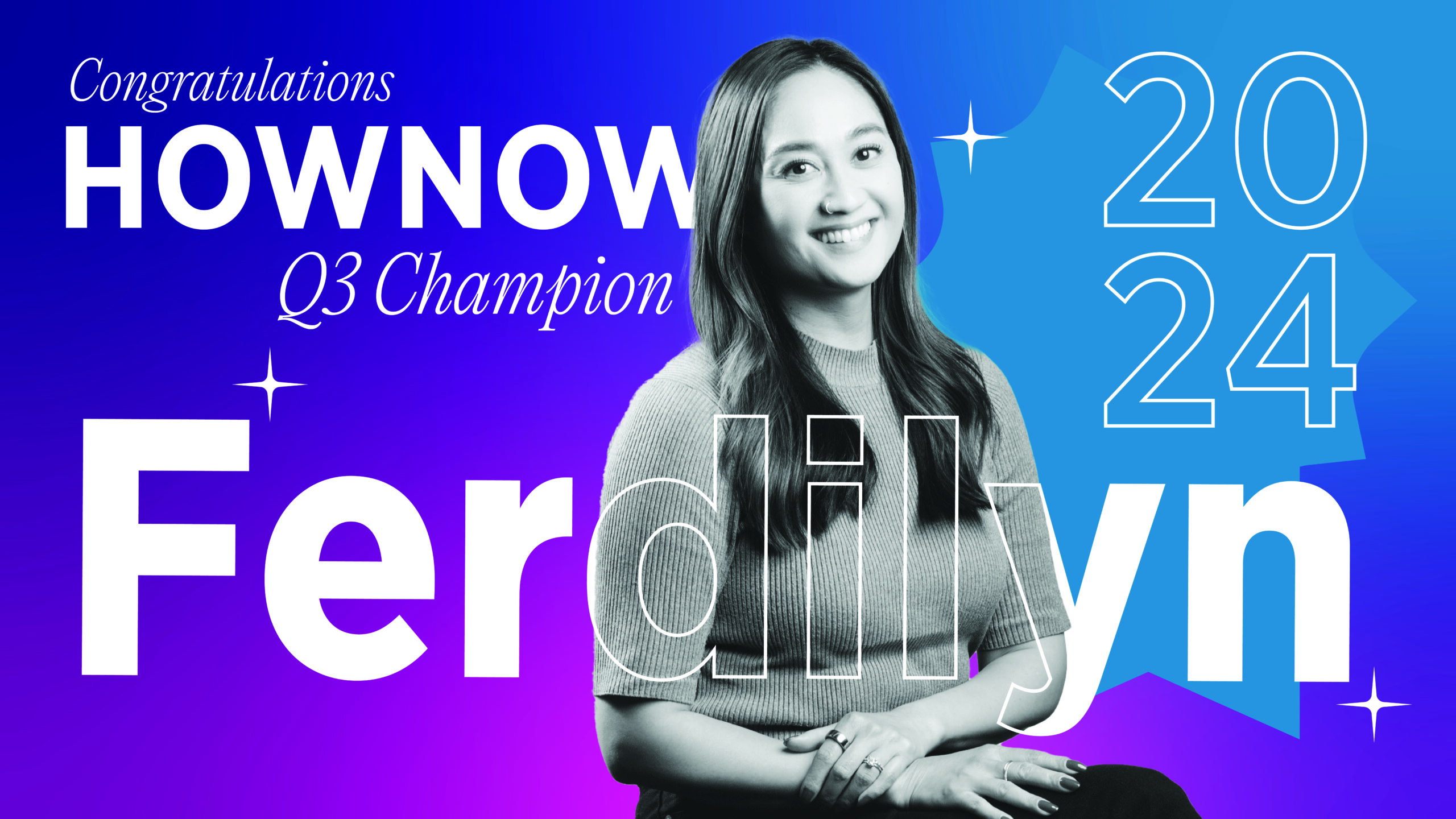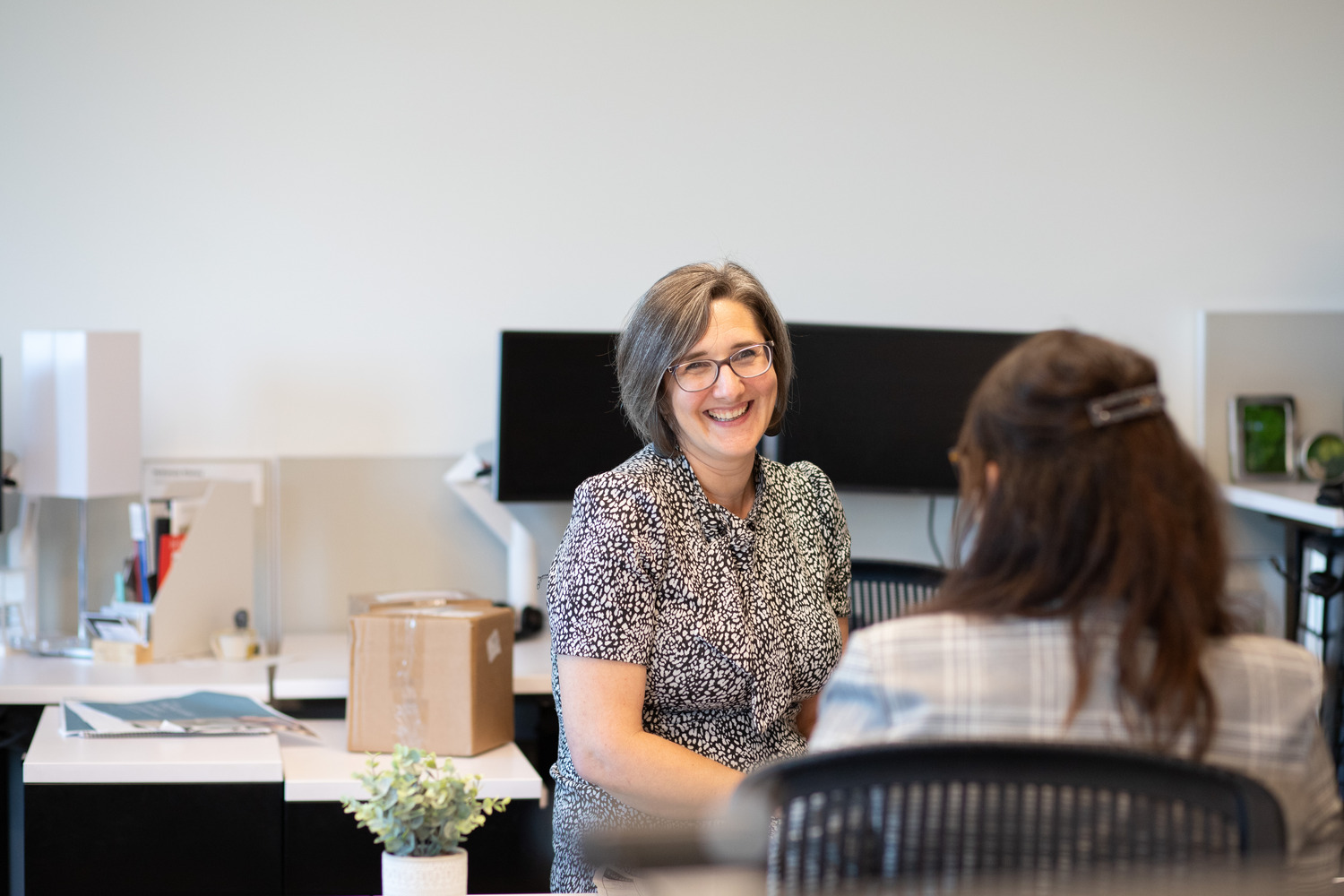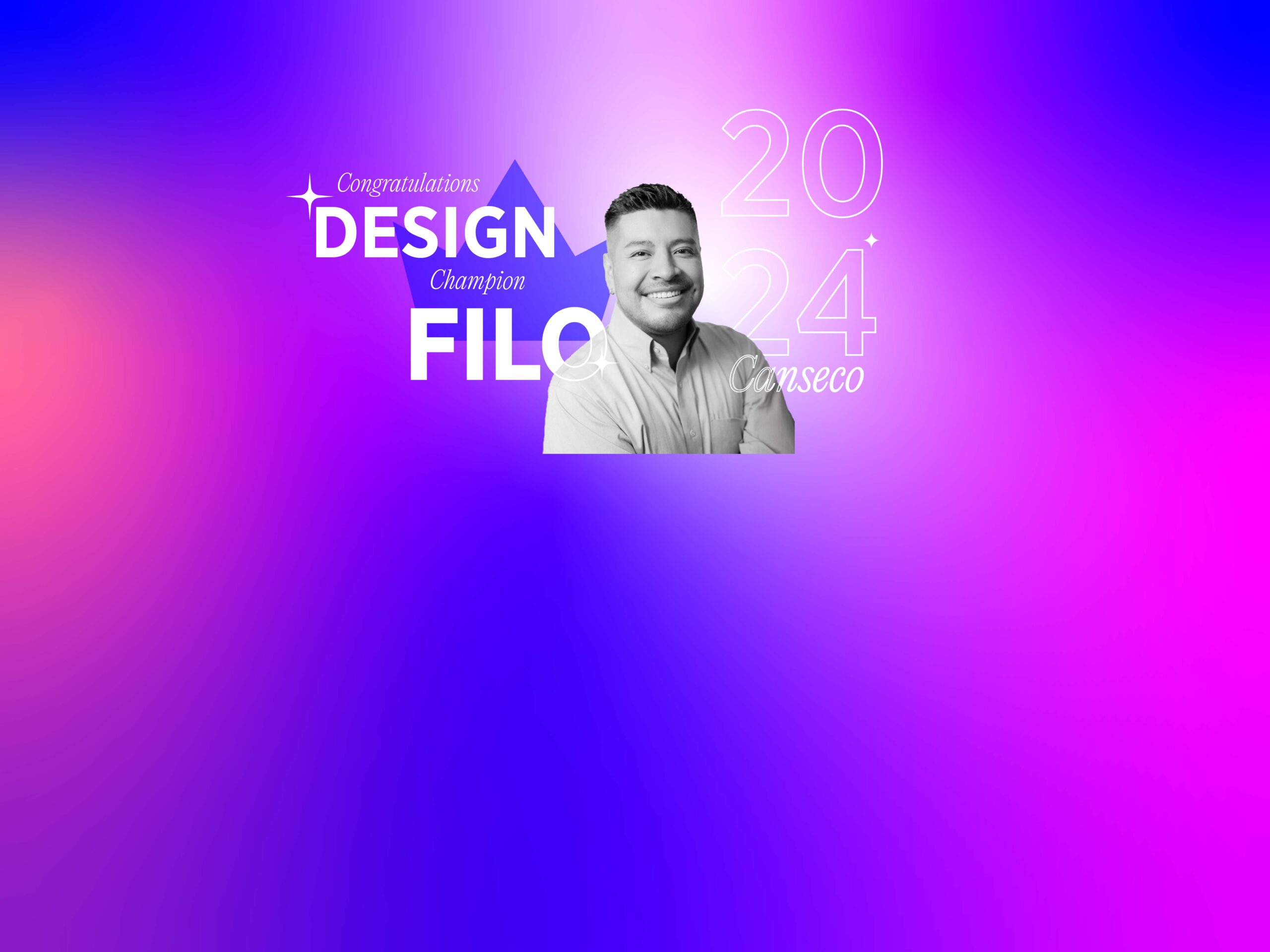Recognized as 2025’s Q1 Employee Ownership Champion, Justin Hunt, Senior Technical Designer, is thoughtful, well-spoken, and devotes both his time and energy to supporting the firm however he can.
Coming to Ankrom Moisan 21 years ago (give or take the four years he spent as a part-time design consultant before being brought to the firm full-time), Justin Hunt has always looked out for his teammates.
In grad school at the time, Justin was enrolled at the University of Oregon’s Portland campus. Encountering a power advertising a model-building job, Justin decided to see what it was all about. “I was in the last quarter of grade school, and I love building models, so I thought it would be a good way to get some exposure to a firm I might want to work at, as well as a way to make some extra money before leaving grad school,” he said. “I ended up being the only person that was interviewed, so I got the job.”
“Dave Heater was actually the person who interviewed me – he was a project manager back then and had just made principal,” Justing added. “That was my first time meeting Dave and my first introduction to Ankrom Moisan.”
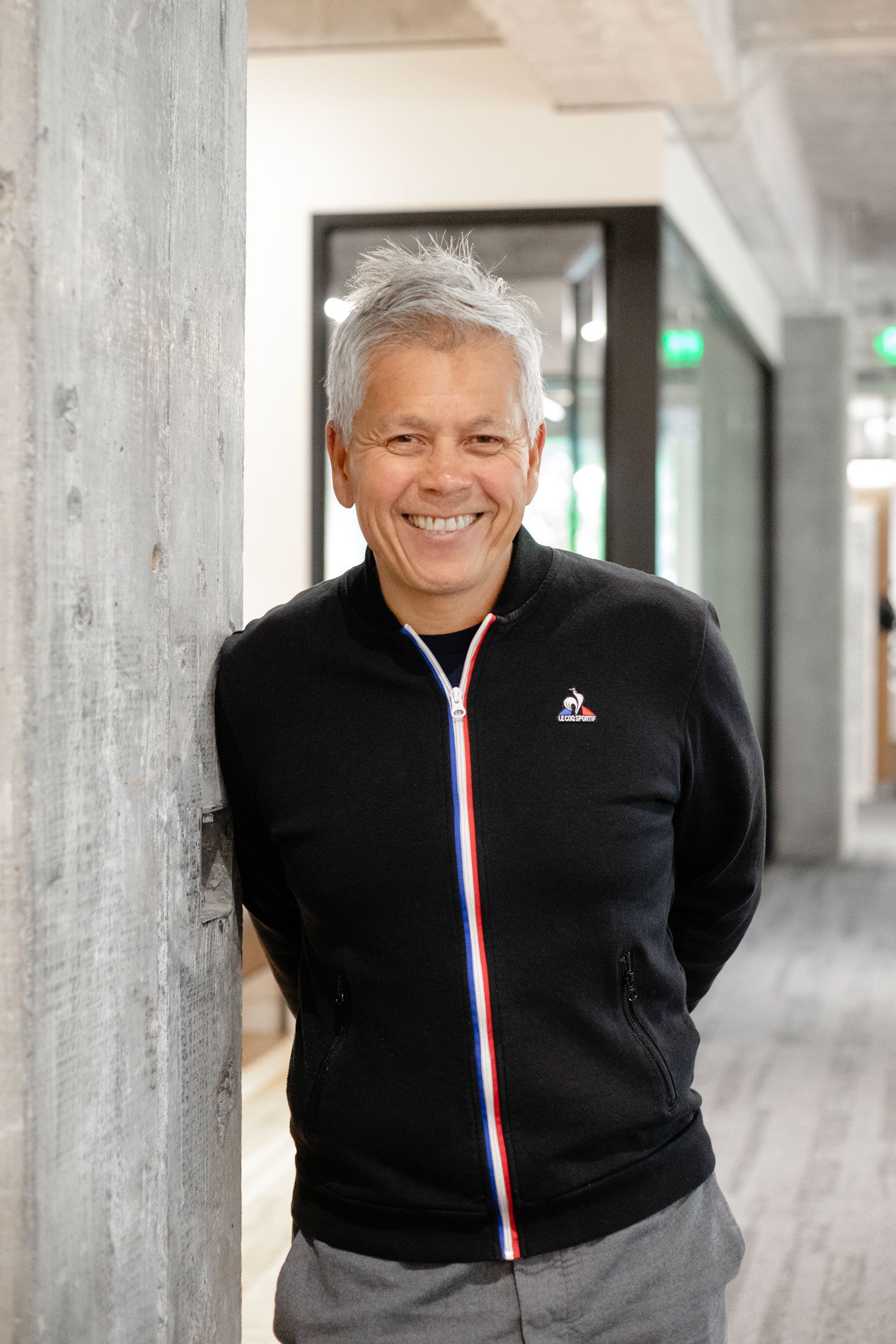
Justin Hunt in Ankrom Moisan’s Seattle office.
Since his first introduction to the firm, Justin has seen a lot of change, both within Ankrom Moisan and in the architecture industry at large. “Industry-wise, I think the biggest change has been the movement towards digital technologies,” Justin said. “It’s really changed the way we do our work. The way we document and think about projects now has all these digital tools in place to help us visualize them. We don’t make physical models the way we used to anymore, because they’re all digital now.”
“In terms of the office, I would say the biggest thing has been the expansion to multiple states, instead of all being in one location,” he added.
Through these changes, Justin has found the opportunity to grow as well. “I came in as an intern to build models, just a quarter away from finishing graduate school,” he said. “Since then, I’ve grown in basically every way – professionally, technically, and in terms of my presence, ideas, opinions, and maturity, as well.”
Still, Justin feels that there’s so much more to learn. “That’s what. I find so attractive about architecture,” he said. “It’s constantly working on new sites, new cities, new projects, with new clients and new consultants every day.”
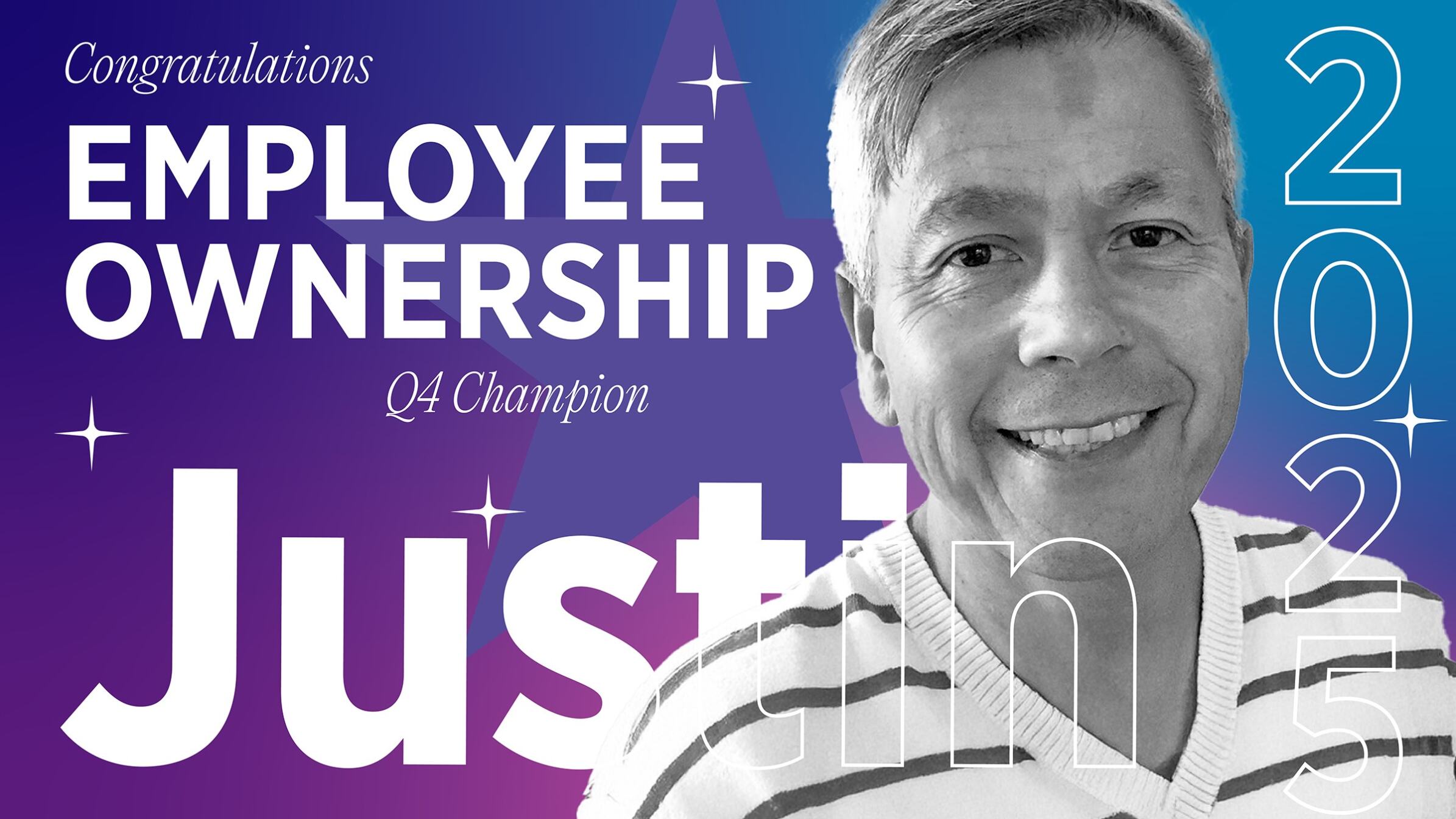
Justin’s Reward & Recognition Banner.
Throughout all his time and experience with Ankrom Moisan, Justin has learned a few lessons along the way that he feels are worth sharing. His advice for young professionals just getting their start in the architecture. industry is ‘listen.’ “You can learn from everyone and everything that came before you,” Justin said. “Even though we have all this technology, we’re a profession built on wisdom and knowledge that has been passed down by word of mouth. The lessons learned are documented heavily and instilled in our processes, but listening to the people who experience them is where you can really learn.”
That advice goes to the rest of the firm, too, not just young professionals. “Everyone has something to teach,” Justin continued. “I think it’s just as important for us to hear what new staff have to say, because as soon as we stop listening to what younger people think, we start becoming more isolated and disconnected from what’s really happening in the world.”
Justin also sees a lesson to be had in fostering interpersonal connections and growing those relationships. “I encourage everyone to exercise more empathy in everything you do. Understand the needs of your colleagues, clients, consultants, and contractors, and really understand the factors that are driving them and their motivations,” he said. “As soon as you can empathize with that, you’ll be more successful in incorporating and creating the best project team – and project – possible and just be more successful in general.”
This outlook and consideration for those he works with is one of the reasons that Justin was honored as the first Employee Ownership Champion of 2025.
Justin’s Nomination Video
“To me, employee ownership means representing the firm through my work and doing the best possible job that I can. That’s the way I work every day. It’s just my attitude,” Justin said.
“Someone once told me ‘Do good work.’ I think it was George Signori. I have always listened to that,” Justin continued. “I always try to do good work while being true to the firm’s goals and parameters.”
Now, moving on to the next chapter of his life and career, Justin has had some time to reflect upon his time with Ankrom Moisan. “Most of my favorite memories center around relationships with people at the firm, like holiday parties, soccer games, bike rides, ski trips, cookie exchanges, and the Food Lifeline fundraising events,” he said.
However, the memory that’s most special to Justin comes from his early days with Ankrom Moisan, when he worked in the model shop in the lower annex of our old office. “It was a special crew down there; Jeff Hamilton’s team,” Justin said. “I sat next to Nancy Young and Tania Feliciano, looking out over Vince, Isaac Johnson, Jason Roberts, George Signori, Mike Klein, Jeff Hamilton, Michael Bonn, Dave Heater, and Marc Nordean. They were all dreaming up the future, designing what the city of Portland would look like.”
“It was a golden moment that was really, really special,” he said. “I will never forget what that was like. It inspired me to be the best I could be. I’m super nostalgic about that period of time. Everyone I’ve talked to that was part of that studio at that moment in time has the same feeling. We all knew it was really special.”
Employee Spotlight: 2024 Q4 Employee Ownership Champion Allie Leaf
Having recently returned to work from maternity leave, Allie Leaf has had time to reflect on the wild ride that her career has taken her on so far.
Joining The Society in December 2019, on the cusp of the COVID-19 pandemic, she was encouraged to apply to the hospitality group by her best friend, Dani Richardson, who happened to be working at Ankrom Moisan. “Dani had heard about an opening with The Society and encouraged me to apply,” Allie said. “She said how great they were, and how they planned to grow their team.”
When Allie first started, The Society was in a much different place than it is today. “The team was really small,” she explained.
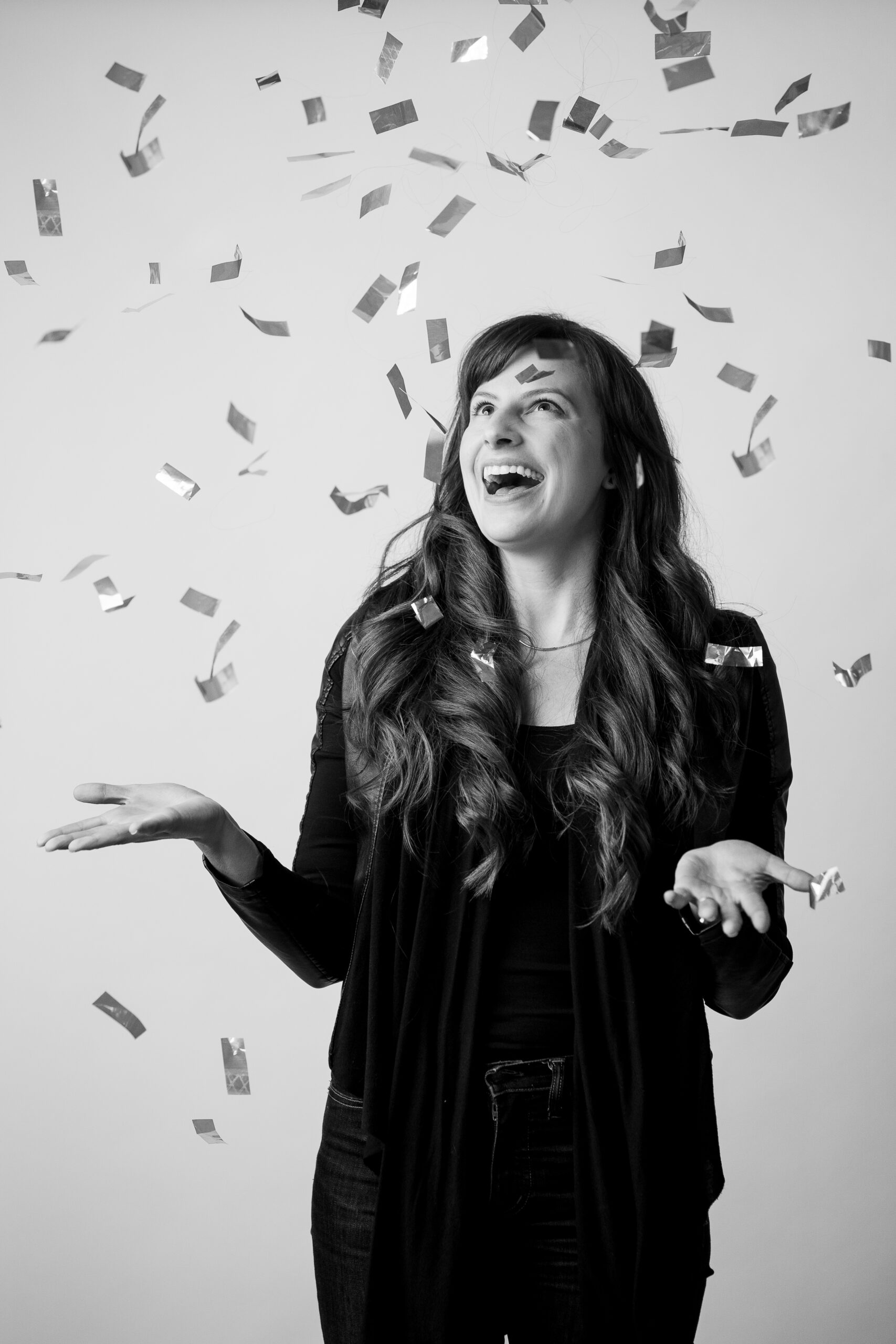
Allie Leaf
“In a way that was good,” Allie reflected. “It meant I got to be involved with every step and stage of a project, taking it from concept all the way to construction documents, into openings. That allowed me to experience different challenges and learn from each one of them.”
When Allie found out she was recognized as 2024’s Q4 Employee Ownership Champion, it was from the commendation of others. “People started messaging me, saying ‘Congrats, Allie!’ I was like ‘What are you talking about?’ Then I went and watched the nomination video on The Insider.”
Allie’s Nomination Video
“It’s really rewarding to be recognized for my efforts,” she shared. “It’s also so nice to know that some of the headache experiences I went through on certain projects was worth it, and that the challenges were overcome successfully where clients want to work with us again.”
Called out by teammate Alison Gilbo in the nomination video for her “signature attention to detail, patience, and grace,” Allie explains that a sense of humor helps her navigate difficult project challenges, emerging with her head held high. “When things don’t go as planned on a project and it’s out of your control, you could get mad about it, or you could roll with it. I think that having a sense of humor and a willingness to find the best solution, even if it’s not a problem that you created, leads to uncovering the best result for a project.”
Gina Leone, another Society member, also praised Allie’s work ethic and attitude, saying that her leadership, responsibility, and initiative make their team and office a better place to work.
“It’s so flattering that she said that,” Allie shared. “Everyone on our team works so hard; we all bring out the best and have a desire to collaborate and help each other out and help our studio be as great as possible. It’s just the most amazing team.”
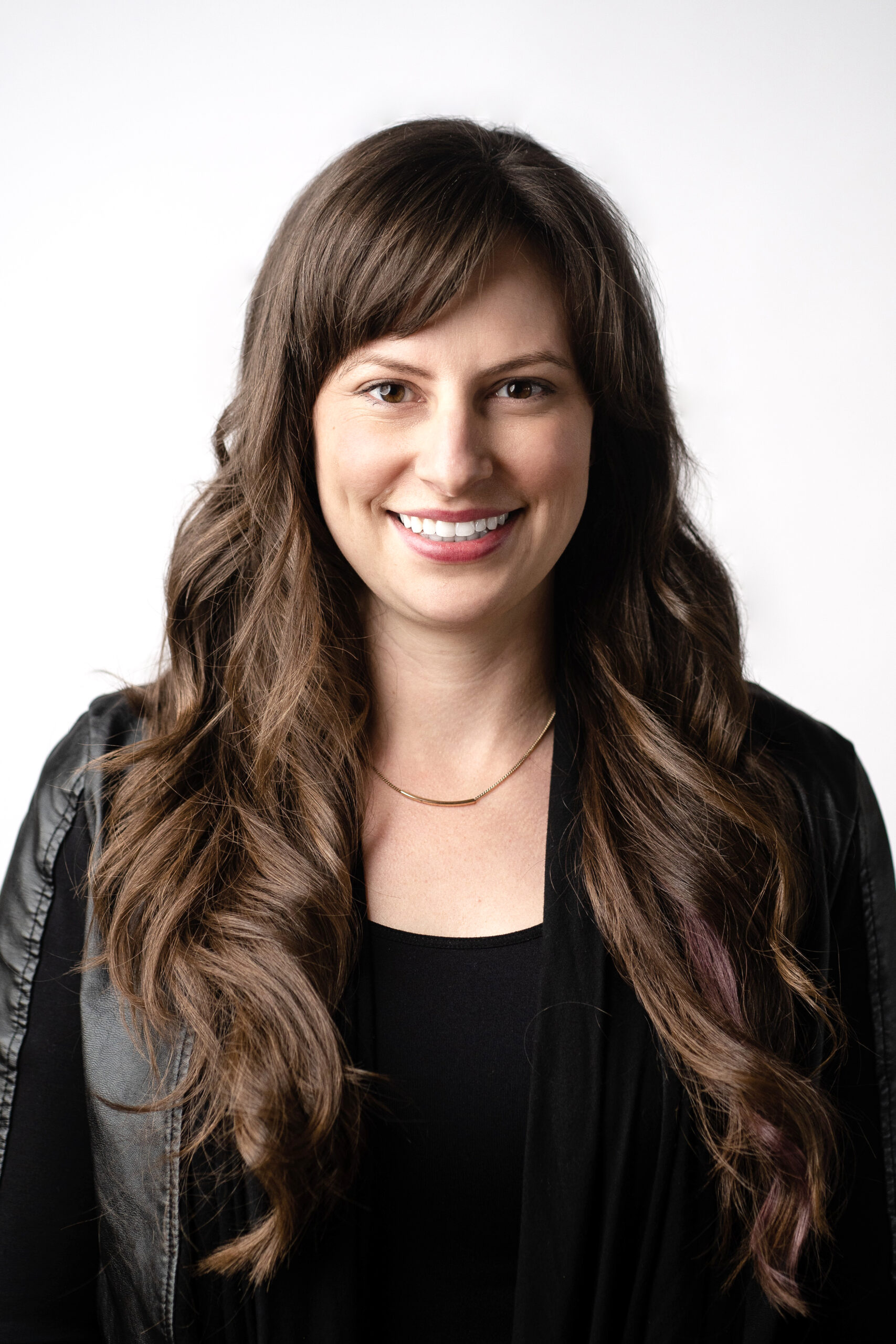
Allie’s Society Member Headshot
To Allie, ‘Employee Ownership’ means contributing to the firm’s growth, and helping everyone within it prosper. “I try to own whatever role or task I’m given so that I can contribute the most that I possibly can to our team,” she said. “I’m so proud of the work that we do and how well we all work together, so helping the team any way I can is a great motivator.”
When asked if she had any advice for young professionals who may just be starting their careers, Allie had two pieces of advice to offer:
“Being solution-oriented and tapping into a different part of your creative side – the one that’s more technical and puts the puzzle pieces together – will lead to finding better solutions for the issues you face than dwelling on the negatives.”
The second piece of advice was that emerging design professionals “should explore their creativity and not be afraid to throw big ideas out there.” She added, “You never know if it’ll make it into a project or not, or if there will be something you can gleam from it that will lead to another idea.”
“For Moxy Asheville, I threw out some pretty wild ideas. One of them was this huge, suspended hanging bench in the lobby,” she said, explaining how it happened to her recently. “It’s an iconic moment as guests walk in, and it was all because I thought ‘Hey, this wacky idea just might work!'”
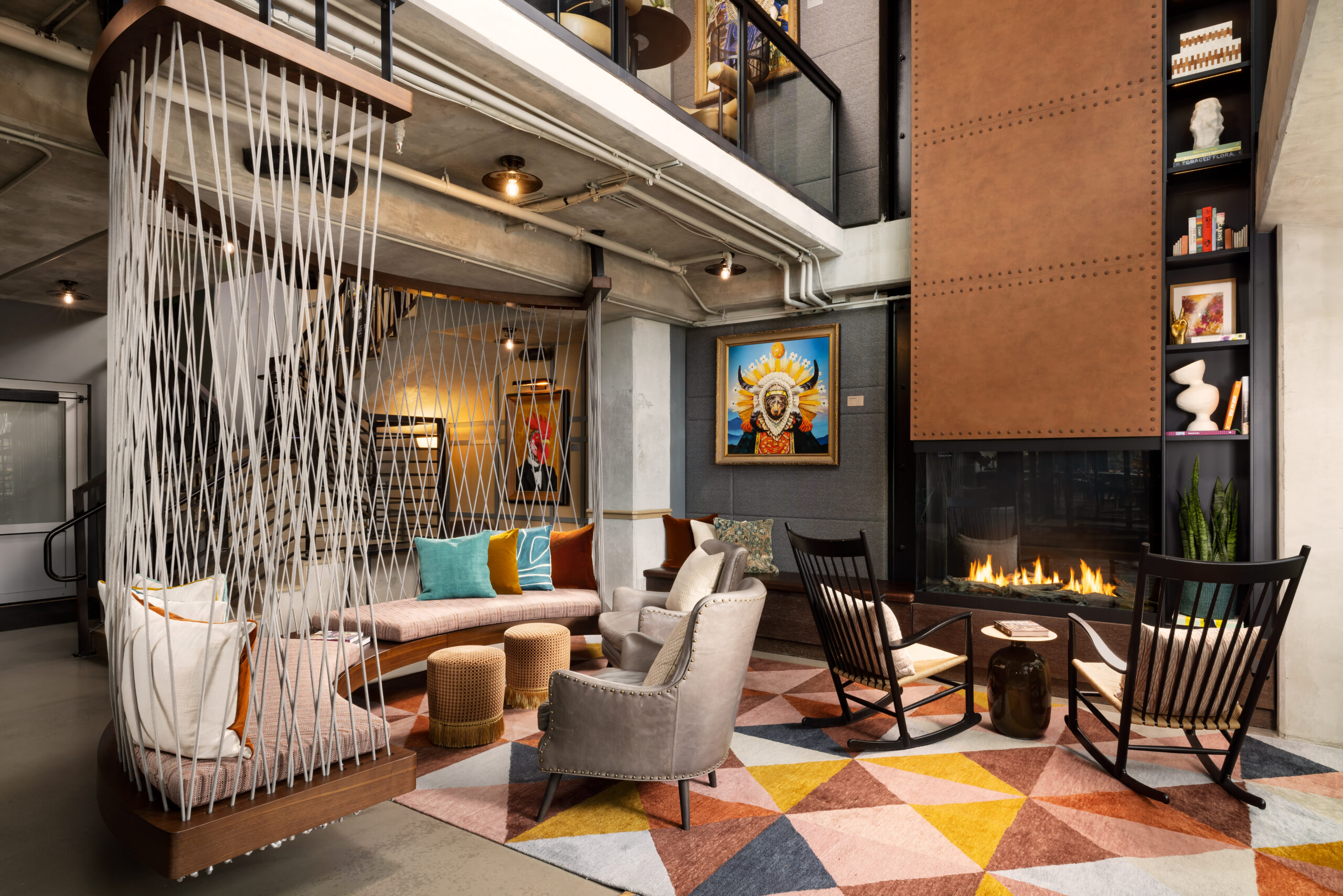
Moxy Asheville’s Suspended Bench
Now that Allie has returned to work, triumphant and celebrated by her teammates, she has gained a new perspective on her place within The Society. She knows that she is supported by her colleagues, that her projects are held in high regard both internally and externally, and she is very excited to continue designing fun, unique projects, seeing where her ‘wacky, wild’ ideas lead her next.
Employee Spotlight: 2024 Q4 Design Champion Monika Araujo
Recognized and honored as Ankrom Moisan’s 2024 Q4 Design Champion, Monika Araujo, Senior Associate, is an active and vital member of her team. In her role as an interior designer, she has made many connections with her coworkers, who constantly support her, encouraging her to grow, learn, and follow what fascinates her.
“I’ve been fortunate to work with some wonderful people here,” she shared. “I enjoy being at Ankrom Moisan because I’m always learning and growing as an interior designer and project manager. My job is always evolving, never stagnant. I can thank Ankrom Moisan for empowering me to pursue my interests.”
Monika’s interests, it seems, revolve around creating well-designed senior communities with her close-knit team, who she credits for the beautiful, impactful work they do. “I find a great team to be key for a successful project. Nurturing relationships over many years develops trust which fosters smooth, efficient, well-designed projects,” Monika said. “I look forward to coming to work every day and having fun with my team. Spending every day with hard-working creatives is a gift.”
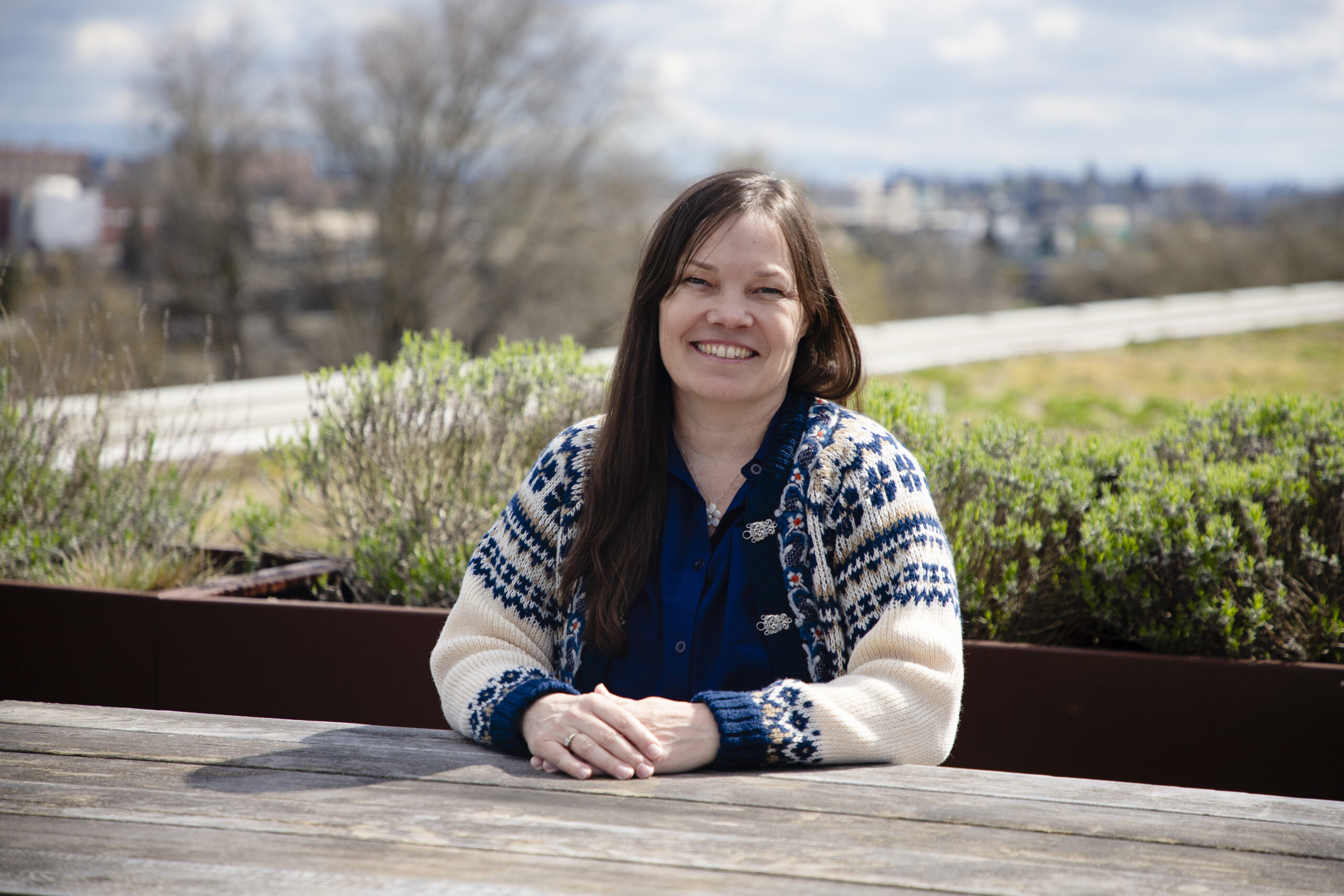
Monika on the roof of Ankrom Moisan’s Portland office
“I enjoy being a member of the Senior Communities Studio because we get to design so many types of senior-friendly spaces,” Monika shared. She loves the variety of work that the Senior Communities Studio does, ranging from healthcare and amenities to apartments and offices. “I like doing both renovations and ground-up projects,” she said. “It’s good to have a mix of both.”
Whether it’s for a renovation or a ground-up project, Monika’s favorite aspect of design is the planning process. “I see design as a thoughtful, intentional planning process that leads to the creation and implementation of beautiful, cohesive, functional spaces,” she said. “The cherry on top is seeing people enjoy the spaces we create.”
Seeking inspiration for the thoughtful planning process of design, Monika turns toward nature and the environment around her. “I look for beauty in everyday experiences,” she shared. “Whenever I feel stuck, I go for a walk and spend time away from my desk.”
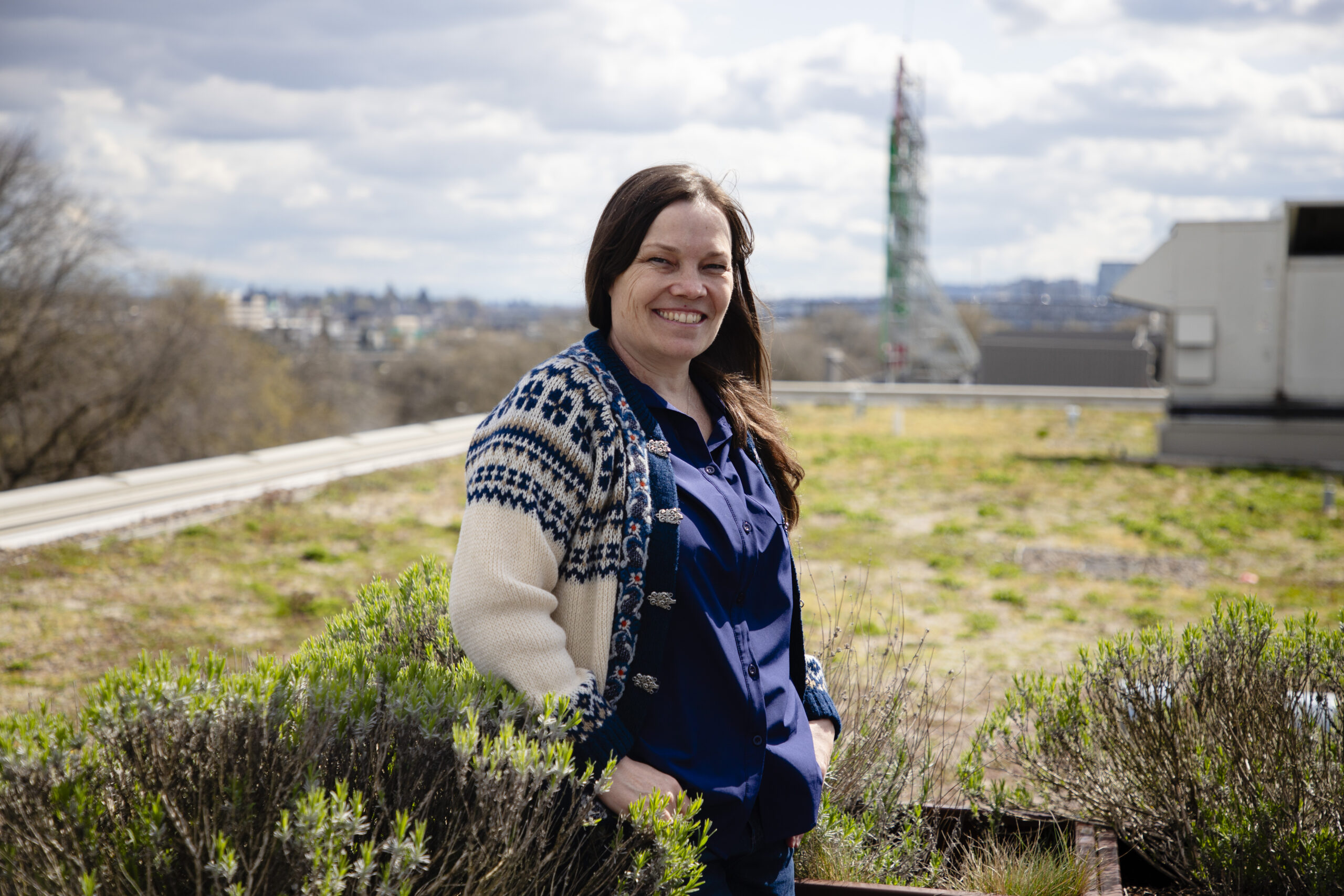
Monika on top of the Portland office
Since starting at Ankrom Moisan, Monika has grown constantly. “At this stage, I can balance managing multiple projects because I’ve grown professionally every year: learning new skills, maintaining positive relationships, and designing various project types. I have more to learn and experience, and I’m excited to continue my path,” she said.
“I feel a big part of growing professionally is making the time to think and process,” Monika added. “Ankrom Moisan nurtures our well-being in this way so that we can continue to make strides in our profession.
Monika’s nomination video
Called out in her nomination video by Jayne Arnold, Interior Designer, for how organized, approachable, open, and knowledgable she is, Monika explains how she balances the technical, design-oriented aspects of her role with the social relationship building she’s done with clients, excelling at both. “I don’t shy away from learning something new,” Monika revealed. “The more I engage with understanding all the work that goes into building spaces, including the architectural, consultant, and contractors’ work, the more I have to offer our clients during design and construction meetings.”
Alissa Brandt, Vice President of Interiors, also quite literally sang Monika’s praise, highlighting how Monika is a mentor to the rest of the Senior Communities team and always brings her best. That element of mentorship is something that Monika values greatly, “I enjoy mentoring other designers. I’ve had many mentors in my career that have helped me along my path. My advice to new design professionals is to seek out a mentor,” said Monika. “Secondly, also aim to improve yourself. Take classes, attend events, visit places, and listen to clients.”
When she learned that she was one of 2024’s Q4 Reward & Recognition Champions, Monika took a moment to acknowledge that her efforts do not exist in a vacuum, and that her team is a big influence on how she approaches her work. “It feels great to be recognized, of course. I’m lucky to work with such a talented team that shares a similar vision to work hard and create beautiful, functional spaces.”
Thinking about how the Reward & Recognition program will continue to honor the efforts of Ankrom Moisan Employees in the future, Monika reflected on how important it is that hard work is both recognized and celebrated. “It’s important to recognize people so they feel they are an integral part of AM,” she said. “I hope the legacy of the program will be that we keep honoring our teammates over the years, so they feel valued.”
Employee Spotlight: 2024 Q3 Design Champion Feature Aaren DeHaas
Honorerd as the Q3 Design Champion for Ankrom Moisan’s Reward & Recognition Program, Aaron DeHaas relies upon the support of her team to organize chaos and deliver exceptional workplace designs that speak to the goals and culture of her clients.
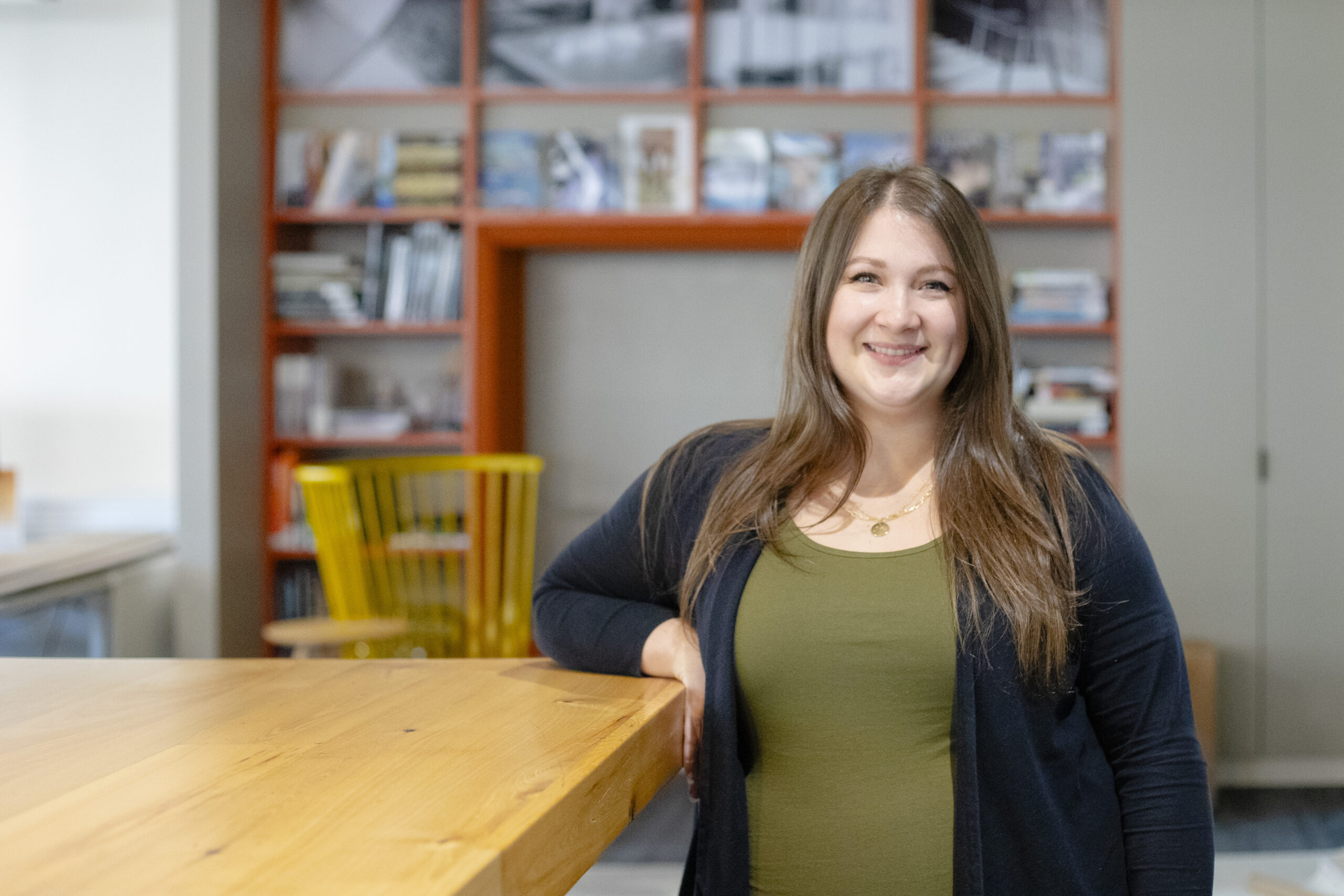
Aaren in Ankrom Moisan’s Seattle office
Attracted to Ankrom Moisan by the caliber and variety of project types being done here, Aaron has been a part of the workplace team for the last nine years. Finding opportunities to learn and grow is very important to her, so she naturally has flourished within her team.
“The workplace team is a really fast-paced group,” she said. “We go through a ton of projects in a year and have such a strong, supportive team. It’s interesting because we have such a great variety of projects and scale, from itty bitty projects where the client just wants to add a wall and a door, to full buildings.”
“We work on a lot of projects at once,” Aaron said. “At one point I was working on 12 projects at the same time. It’s a lot but you’re getting experience in every phase of a project at once. It almost expedites your learning in a way, since you’re going through the workflows from start to finish on a project in various scales. It’s on-the-job learning.”
While having to juggle so many projects at a time could easily become overwhelming, Aaren says that the workplace team supports each other in a way that reduces the amount of stress she feels.
“There’s a collaborative nature that’s always apparent and always somebody to turn to that’s got your back,” said Aaron. Whatever it is, we all band together to make sure anything that needs to get done is completed. Having team members you can rely on and trust has been the most supportive thing to me and my success.”
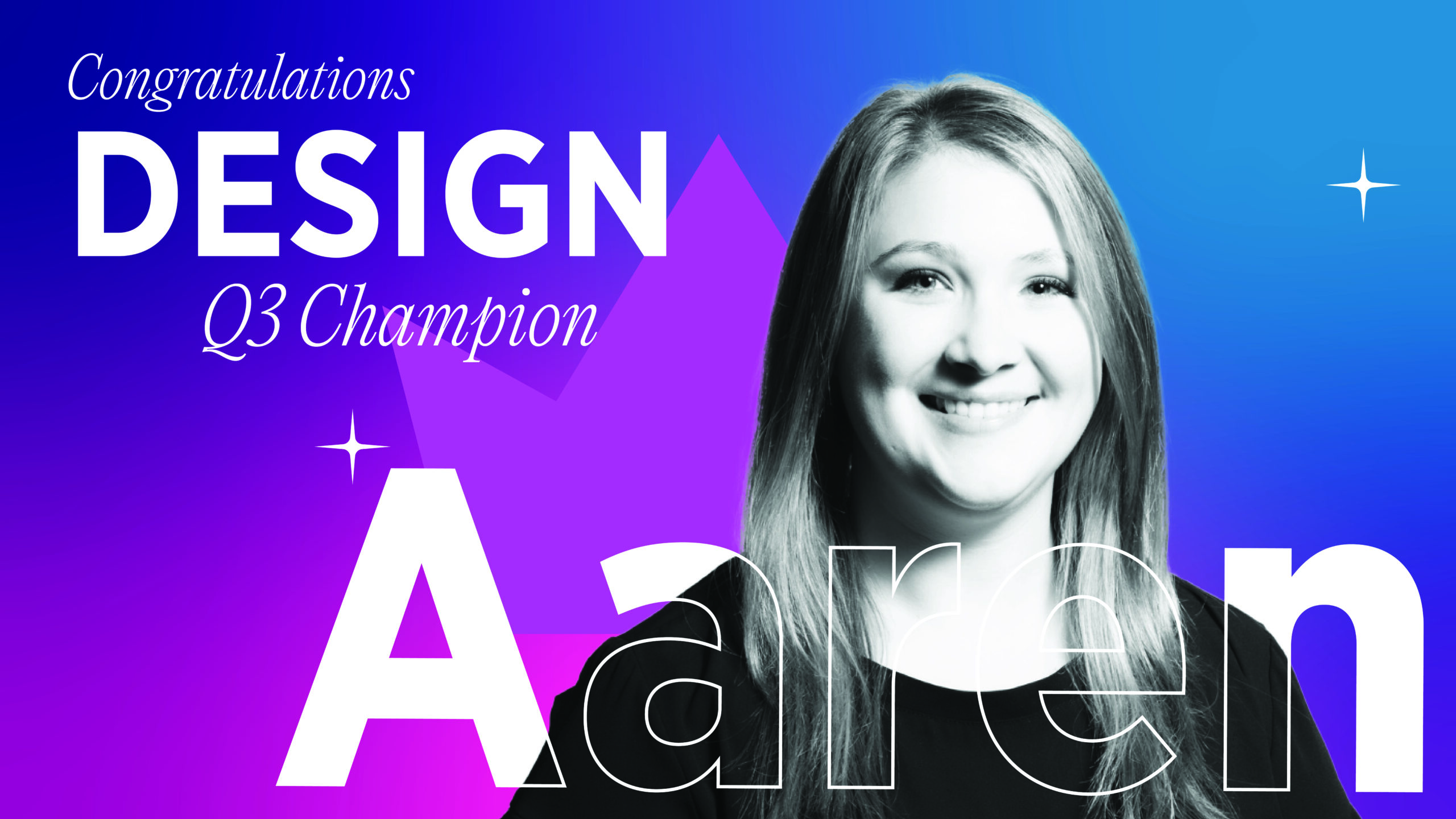
Aaren’s recognition banner
Aaren’s favorite projects are the fully designed projects where there is an opportunity for her to let loose and flex her creative design muscles. These projects are often on-of-a-kind. “Because each client’s culture is different, you can kind of tailor those project to reflect those cultures,” she said. “I get inspired by that kind of connection with clients and with using their cultures and personalities to guide me in design. It’s fun to take their brand personality – their colors and fonts and signage and that sort of thing – and transform it into a tangible space. There’s always bumps along the way, but once you get it, it feels great. Clients like it too because you understand them, and they feel heard.”
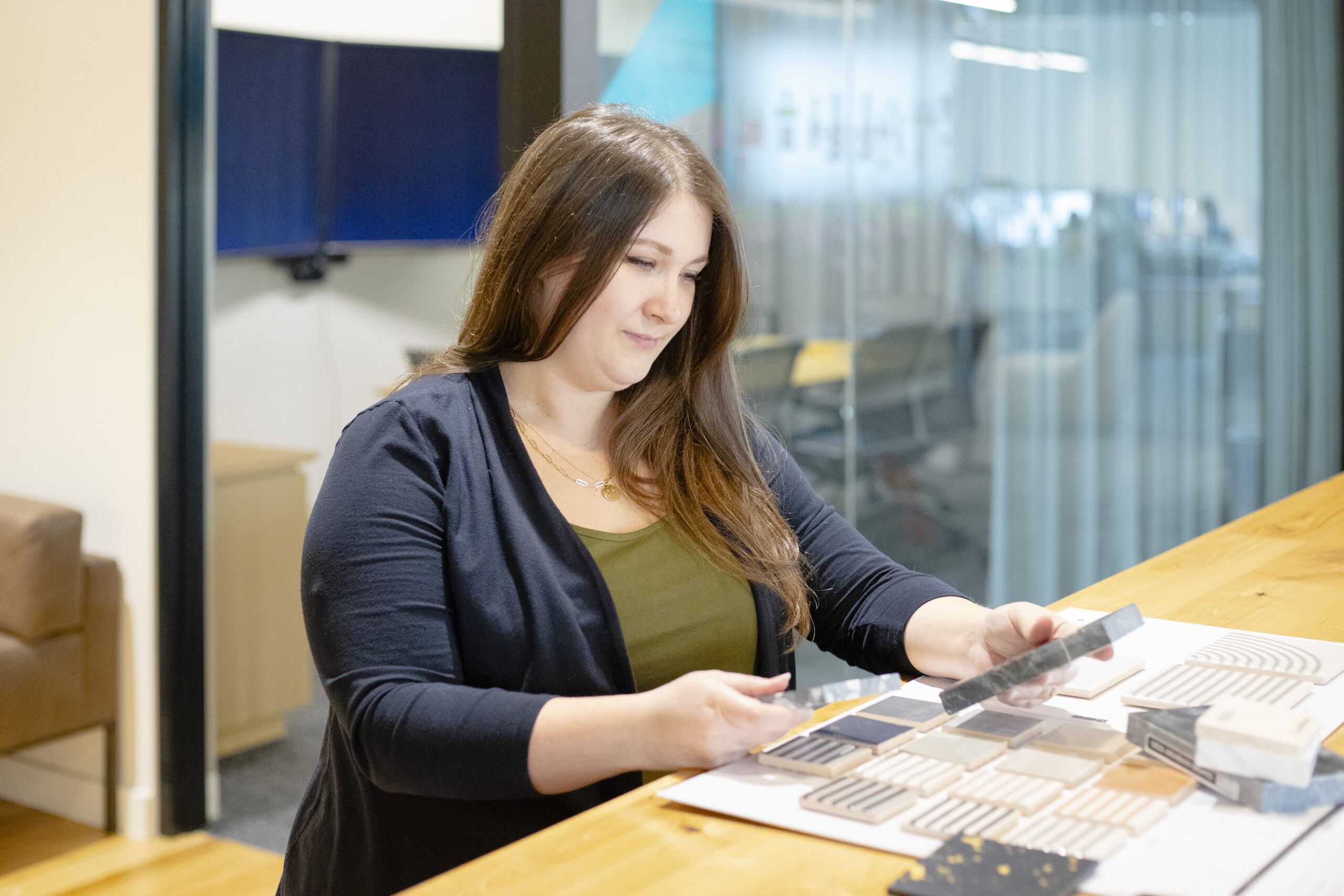
Aaren in Ankrom Moisan’s Seattle office
When she first found out about her recognition as 2024’s third Design Champion, Aaron was shocked. “I found out from the videos in Green Screen In Between. I was completely surprised,” she said. “I saw my picture and did a triple take. It took a little bit to sink in.” Now that she’s acclimated to the honor, she has high hopes for the future of the Rewards & Recognition program, although she is still humble about her selection as an honoree. “It feels really nice to be recognized. It’s a nice thing to do for people and I hope that this program encourages people to continue to grow and put out their best work,” she said. “Although I’m the one being honored, you can’t do what I do without the rest of the workplace team and the supportive structure we have,” she added. “It’s too much to do by yourself.”
Aaren’s Rewards & Recognition Nomination Video
In her nomination video, Alissa Brandt, Vice President of Interiors, praised Aaren for her ability to manage complex, high-pressure projects while delivering exceptional results, as well as your tendency to meet demanding deadlines with creative solutions while still finding the time to guide and support her teammates. Acknowledging that she can’t keep everything in her head, nor would she want to, Aaren explained how she uses notes to stay organized and on top of her work, sharing important information with her team in a timely manner.
“I’ve heard it called ‘organized chaos,” she said. “I’m organized and have a system that works for me. I have so many notepads and sticky notes everywhere; I’m not sure if it works for anyone else.”
Bethanne Mikkelsen, Senior Principle, similarly calls our Aaren in her nomination video, complimenting her ability to elevate the design process and facilitate a creative culture that thrives within the firm.
“As far as elevating design,” Aaren responds, “I think it goes back to taking risks. You can’t find the full potential of what a design could be without putting yourself out there a little bit. I try to understand who a client is and what their culture is like, and how to push it a little further; How we can take their comfort zone and push it to the next level.”
This is something that Aaren could do over and over again. “I feel that design is never done,” she confessed. “It’s almost like its own organism, always changing and adapting. I think that that kind of flexibility is really important – you can get to a point where you’re happy with where a design is, but you have to be open to the possibility of making adjustments. Inspiration can hit at any moment and your design may be better for it in the end.”
“As long as our clients are happy, that’s what our goal is – that they have a comfortable space that shows off who they are and attracts the talent they’re looking for,” she said. “it’s all about making good designs that reflect our clients and their goals.”
Employee Spotlight: 2024 Q3 HOWNOW Champion Ferdilyn Ramirez
Recognized as 2024’s Q3 HOWNOW Champion for bing an advocate and proponent of Ankrom Moisan’s company culture for the San Francisco office, Senior Associate Ferdilyn Ramirez embraces our spirit of sharing openly, boosting teamwork, camaraderie, and inspiring others to live and follow our HOWs.
An original member of Ankrom Moisan’s San Francisco office, Ferdilyn was absorbed into the firm back in 2016 when we merged with Forum Design, a small architecture and planning firm, taking over their Bay Area office space. It was a big change, but one that was not unwelcome.
“Coming from a smaller firm to be part of a larger company with more resources has been really nice,” Ferdilyn reflected about becoming part of AM. “The different types of work and projects that we get to work on has been amazing compared to the smaller portfolio I had before. The people are also great.”
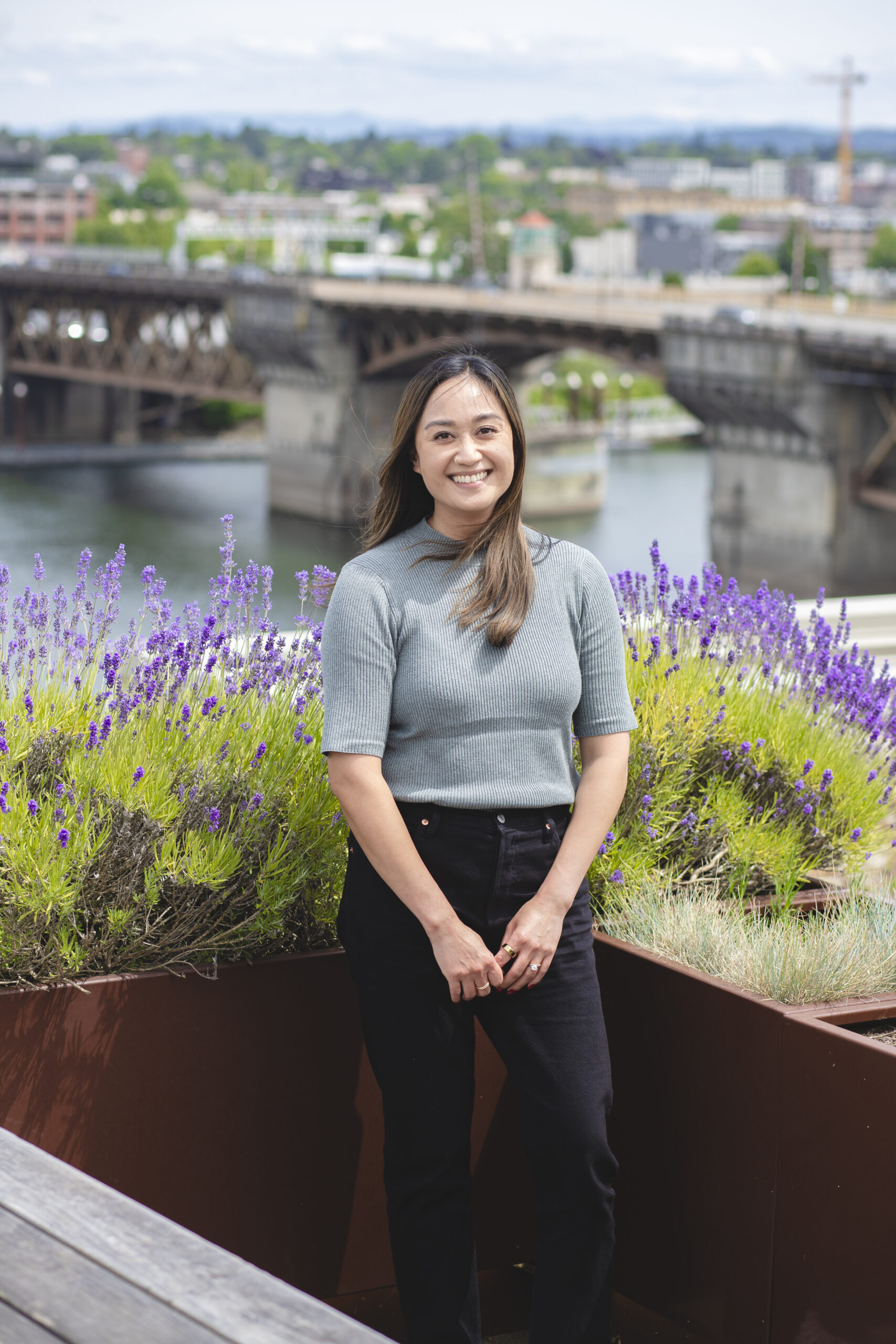
Ferdilyn on top of Ankrom Moisan’s Portland office.
Passionate about providing housing to those in need, Ferdilyn sees her involvement with the Affordable Housing studio as a Technical Designer as Ikigai, a Japanese concept that roughly means ‘one’s reason for being’ or ‘sense of purpose.’ “There’s a Venn Diagram of what the world needs, what you’re good at, what you can be paid for, and what you love,” she said. “The overlapping parts in the center are your purpose. I think housing architecture does that for me.”
Feeling positive about the difference she makes day-to-day through the Affordable Housing studio, Ferdilyn notes that working closely with her team has not only boosted her self-confidence but also increased her overall trust. “The open communication in all project teams I’ve worked on has been the most helpful for me in creating a feeling of trust in the work that I do,” she said. “I enjoy feeling like we can execute a project or plan, and people don’t have to micromanage one another to get it done.”
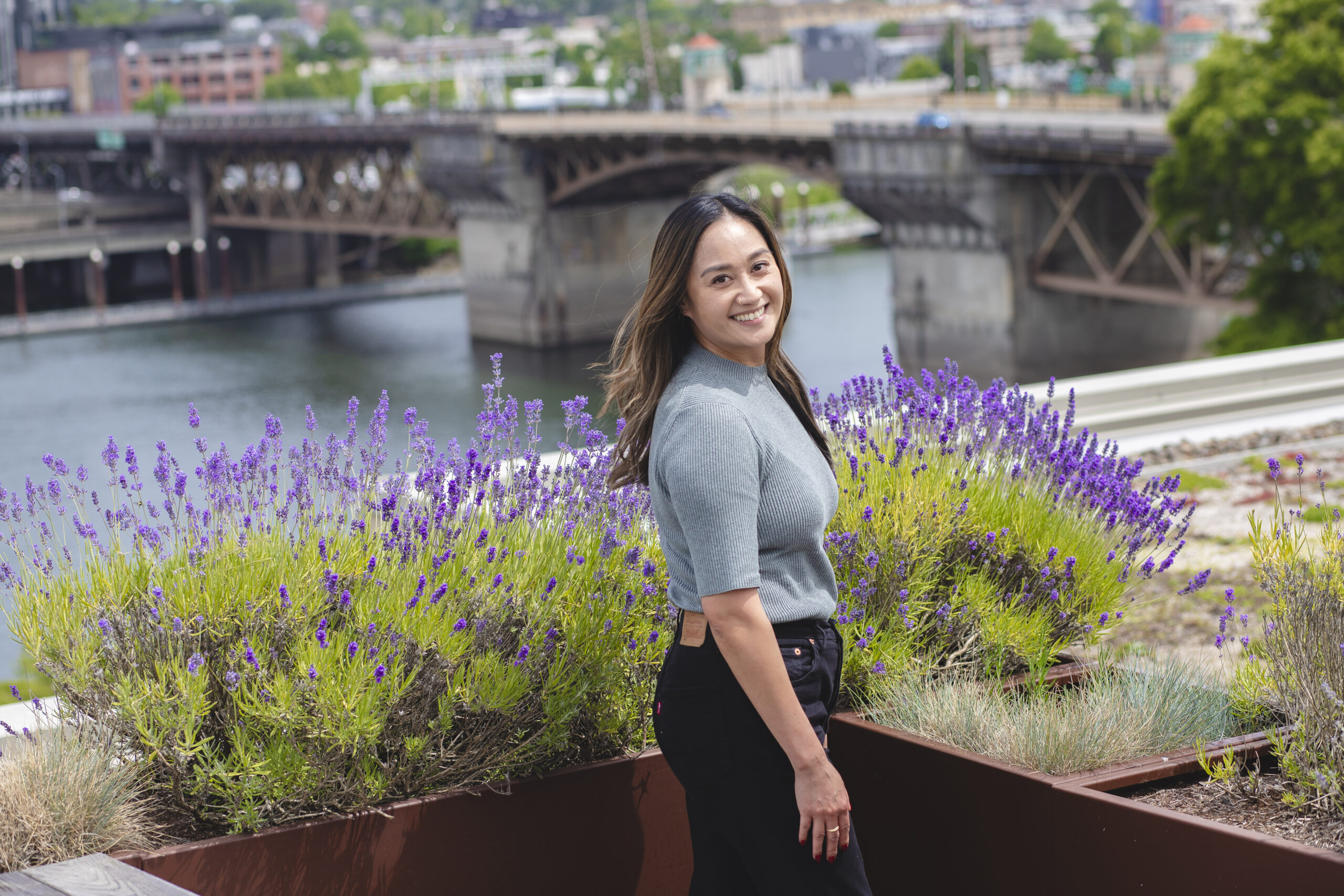
Ferdilyn at AM’s Portland office.
When AM leadership got together to come up with our HOWs and Whys, Ferdilyn was quick to adopt them into her daily routine. “I thought it was an interesting and fun new way to look at work,” she said. These initiatives quickly became second nature to Ferdilyn, as she views the tenants of company culture like part of herself. “It’s really all about being yourself,” Ferdilyn insists. “Then from there, it stems off to the other HOWs. I told myself last week that if you can just be yourself, then everything else will come naturally.”
“Being myself is the easiest one,” she shared. “Embracing change is harder.”
Offering advice to young professionals who may just be starting at a company with strong values like Ankrom Moisan, Ferdilyn imparted “Be yourself. Trust the path. Be vocal and learn what you want. Be positive and have fun with it. Be professional, but still, have fun. Don’t get so hung up on the day-to-day tasks; Look at the bigger picture and what you’re working towards.”
Ferdilyn’s Nomination Video
Ferdilyn was watching the Green Screen In Between video on her phone with a few people at lunch when she found out about her nomination. “I was very surprised,” she said. “I didn’t even know that the Q3 awards had been released.” Feeling honored about her selection, Ferdilyn links her win to the confidence and trust she has built with her team, and the relationships that she has developed at Ankrom Moisan. “The trust I’ve built with my team goes hand-in-hand with building my confidence,” she continued. “This award is a perfect reflection of that. It’s been nice to be recognized for that kind of growth.”
Hoping that the Rewards & Recognition program continues well into the future, she praised the series for how it connects the firm across offices. “You get to hear about all the great work that everyone is doing every day,” she said. “But then to highlight just a few people is so great. I think having a spotlight, singled-out recognition is very rewarding. It’s really great to see people talk about each other in a positive way.”
“Maintaining company culture across offices with physical distance is tough. I don’t think you can impose ‘culture’ on a team, but with the way our HOWs are structured, there is space to be ourselves and make it our own,” Ferdilyn said. “When there’s a larger event in Portland or Seattle, we try to find similarities in date, time, and type of event. Sometimes, that’s not possible, so we put our own spin on it. This lets us try to include everyone, make sure everyone is interested, and that we have full attendance. When one person misses an event, we feel the impact since we have such a small team in San Francisco. In the end, I think that’s part of what helps keep our culture alive!”
Employee Spotlight: 2024 Q2 HOWNOW Champion Matthew Poncelow
Just past his ten-year anniversary with the firm, Matthew Poncelow, Senior Project Manager, sees the hidden connections between a project, its intended users, and the team of designers creating it, using Ankrom Moisan’s HOWs to stay on top of those threads, manage what needs to be done, and identify opportunities for collaboration across teams. He chooses his own adventure, supporting those he works with along the way.
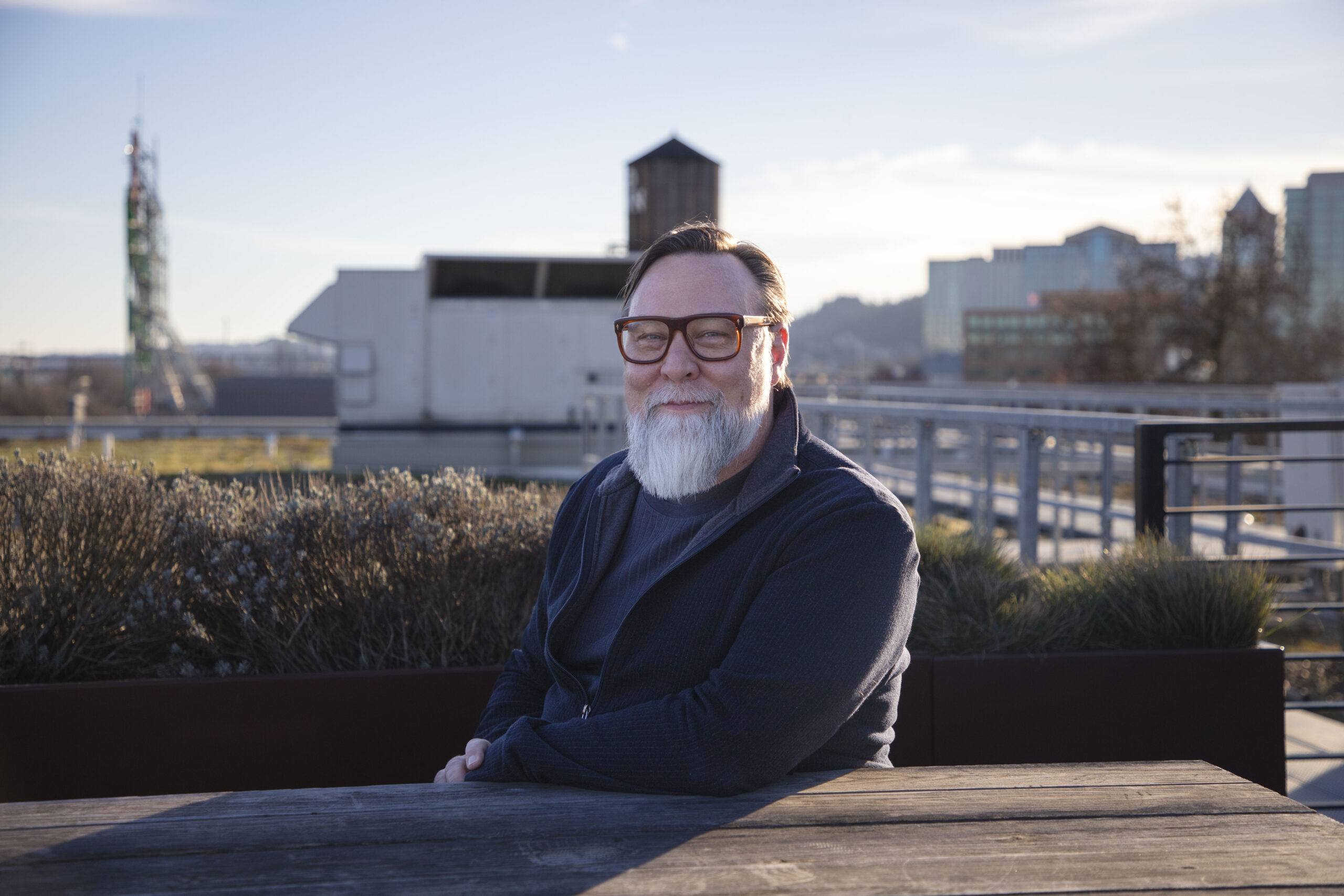
Matthew Poncelow.
Matthew initially came to Ankrom Moisan from Santa Fe, New Mexico, relocating to the Pacific Northwest because of his desire to pursue housing work. He recalls his job search, saying “Ankrom Moisan was the most welcoming and seemed to have the best culture. They were also working on project types I wanted to be involved with, so it seemed like a perfect fit.”
Now, a decade later, Matthew has seen a lot of change within the firm and architecture industry at large. “When I first started, it was very different,” he shared. We were still in the old building on Macadam Ave. Tom Moisan was still very much involved in the daily things going on in the office. It was a time of growth. There was lots of hope, and lots of future project prospects. It was just a really exciting time to be here.”
Matthew noted how interesting it has been to see how we work move into the digital sphere. “When I started, there was still a lot of paper around the office. There were piles of drawings and still lots of physical media,” he said. “We don’t have that anymore – it’s all online. Our visualization has advanced so far, too. Now we have things like Enscape where you have a real-time rendering that you can engage with in virtual reality. I’m looking forward to seeing what the technology does over the next ten years.”
“It’s funny,” he added. “As I’ve gotten older, it’s gotten harder and harder to embrace change. We get used to doing things a certain way. After doing it that way a few times, we think we know what to do. That’s why I think that embracing change, while being the hardest HOW to embrace, is probably one of the most important of our values, since it’s the only way one can grow.”
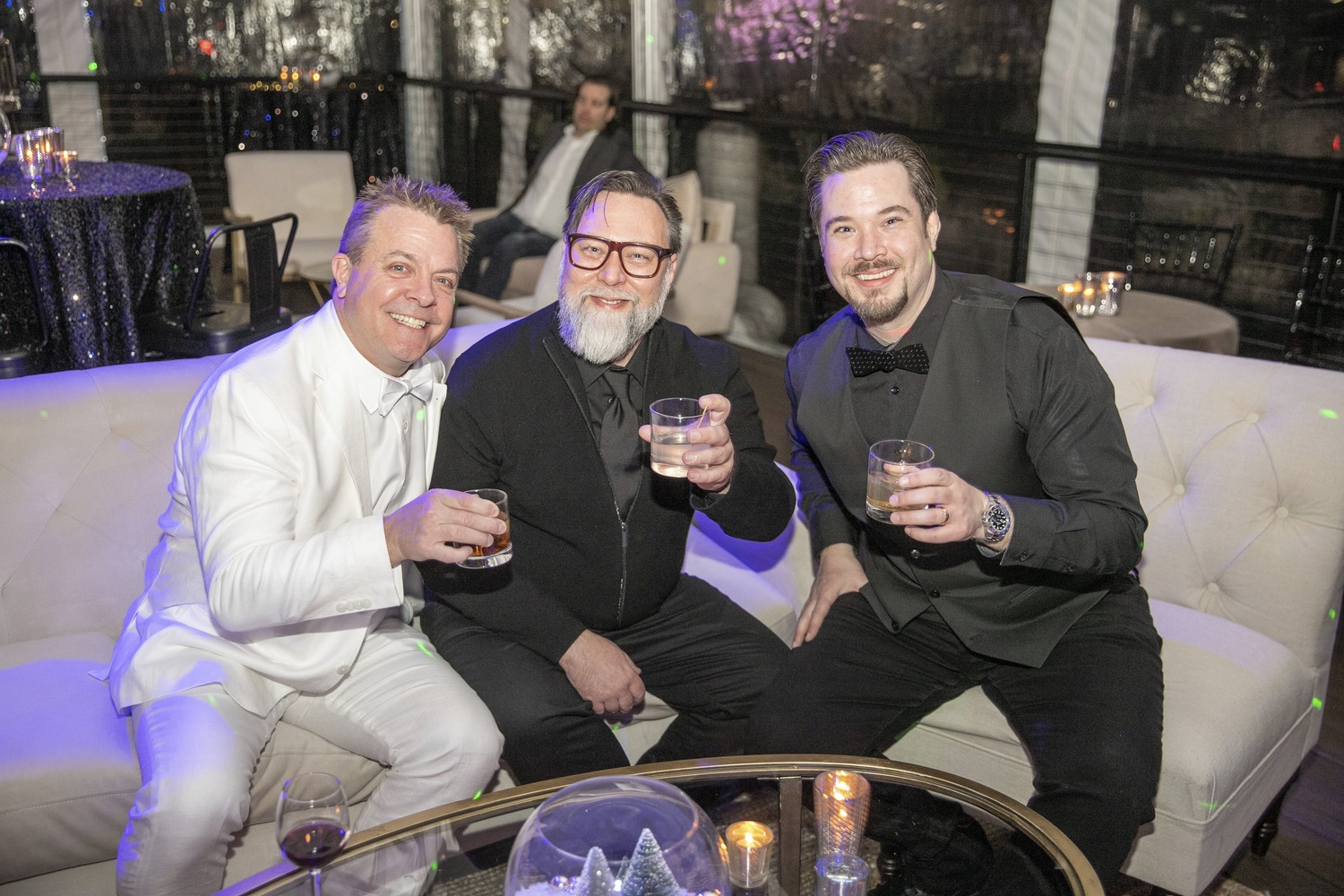
Matthew (center) at the 2022 AM holiday party
Adapting to industry-wide changes and gaining a better understanding of the architectural process along the way, Matthew attributes his ability to see how the different parts and pieces of the architectural process come together to his position as a Senior Project Manager. “I’m very lucky. I’m able to start at the very beginning with the developer and feasibility studies on many projects and am also there at the end when we’re opening the building and people are moving in,” he said. “Being able to see the whole spectrum from start to finish is really what architecture is about to me.”
While the prospect of working on housing is what attracted Matthew to Ankrom Moisan, our firm’s culture, and the people who make it up, is what has kept him here. “There are a lot of great people at Ankrom Moisan,” Matthew stated. “The people who work here genuinely care about each other.” He continued about the atmosphere of encouragement at Ankrom Moisan, saying, “I think that there’s a lot of room for professional growth here. It’s a ‘choose-your-own-adventure’ place to work. If you’re interested in something or have a passion about something, very often, the firm will support you in becoming more of an expert in that area.”
“You will get out of Ankrom Moisan what you put into it,” he said. “Listen; Learn; Watch what others are doing and you will see our HOWs manifested in the people around you. By just participating, ways to embrace our HOWs will show up. Get involved and be a part of it.”
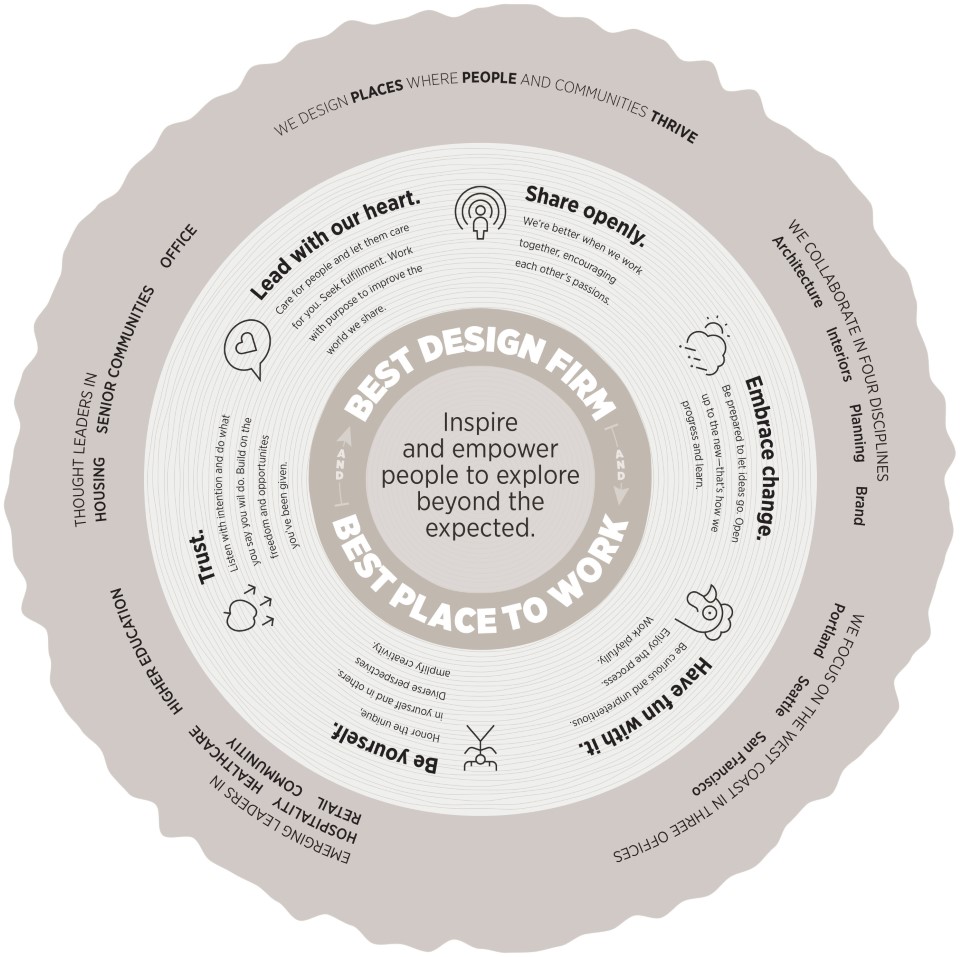
Ankrom Moisan’s HOWs
With that perspective in mind, Matthew is very satisfied with the adventure he’s chosen in housing. “The scale of projects is interesting to me,” he shared. “I like working on larger scale projects.” Specifically, Matthew loves doing fire stations. “They are some of the most well-organized folks out there. They know what they want, and they make decisions quickly,” he said. “I find that the impact of doing multifamily housing and being involved in bigger jurisdictions – providing housing to lots of people where it’s needed – is very satisfying.”
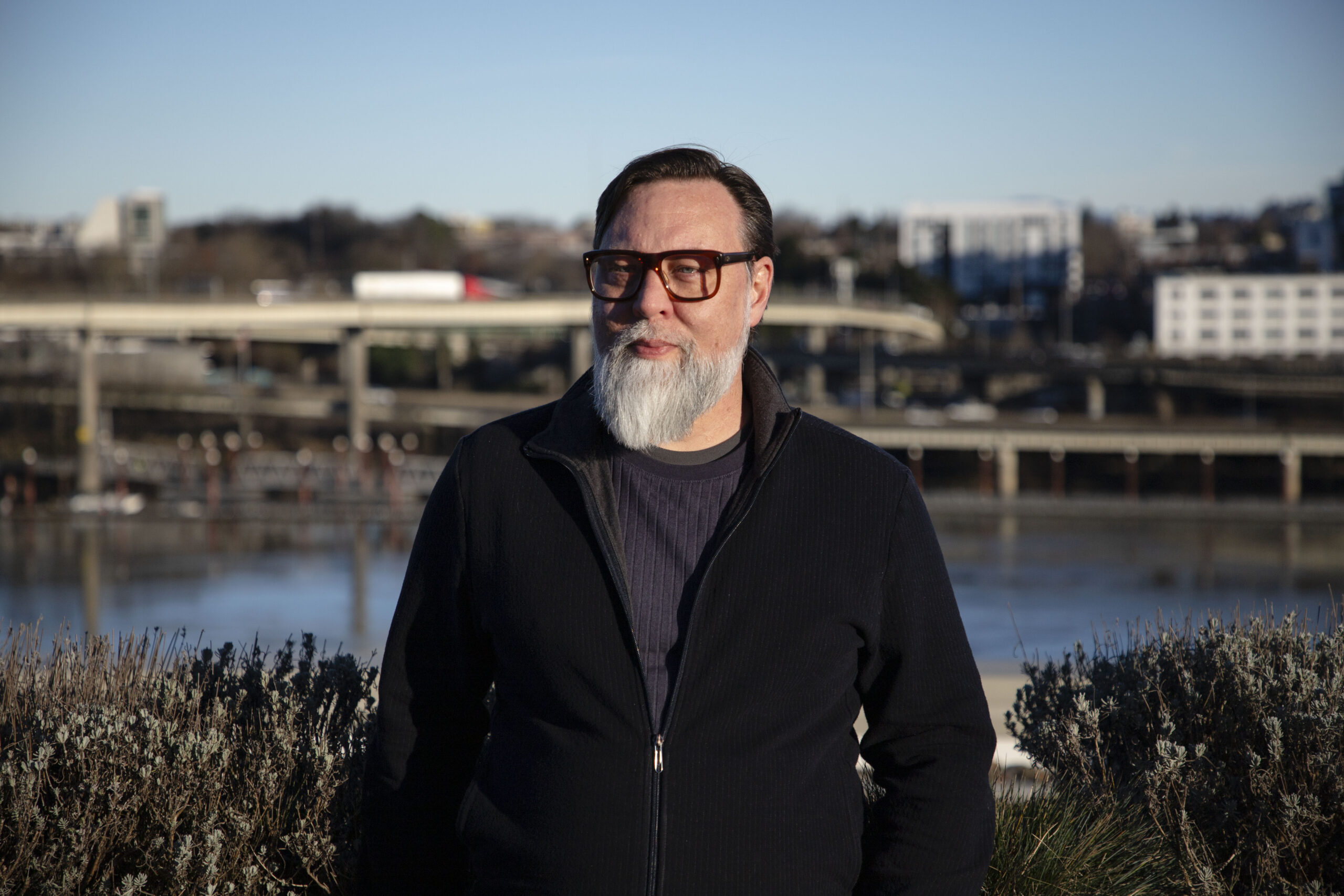
Matthew on the roof of Ankrom Moisan’s Portland office.
Finding inspiration for a new project is another aspect of housing that Matthew finds satisfying. “A lot of that early work on a project is learning about the site and the community it will serve, as well as learning about the history and geology of the site,” he said. “I find that very inspiring, and I enjoy the challenge of figuring out how to take a complicated set of requirements and make them real. The depths and processes that go into creating impactful architecture inspires me quite a bit.”
Because there are often many different moving parts that go into the process of creating an impactful project, Matthew shared that success comes easiest when people are at the top of their game, “when we’re all doing our part and functioning like a well-oiled machine.”
Recognized by David Kelley, Housing Studio Director, in his nomination video for his excellent leadership, cool head, and commitment to quality work, Matthew acknowledged the significance of Ankrom Moisan’s HOWs in influencing his work ethic and communication style. “It all really starts with leading from the heart,” he explained. “It brings me great joy to be problem solving and caring for people and communities by trying to create wonderful places for them to live and thrive – in my mind, quality work is the way to show that, and I think that my quality of work is a direct reflection of all the people I work with. I would not be able to do the quality of work that I do if it wasn’t for the other people around me. There’s a lot about sharing values openly that contributes to that. And like I said, I love it. I’m having fun with this. I enjoy the process. I’ve wanted to work in architecture ever since I was a kid. For all these reasons, I’m led to want to do my best, highest quality work.”
Matthew’s nomination video
Don Sowieja, Housing Studio Leader, also recognized Matthew’s ability to balance multiple projects in his nomination video, something that Matthew attributes to his understanding of the architectural process. “Working on multiple projects under multiple different phases of construction is something that is simplified by having systems and standards in place. It makes it easier to deal with unknowns on a project and quickly shift gears when you know that the foundation or base is there.”
For example, Matthew makes lists and sheets to keep track of what is happening on a project at any given time. “Being disciplined and maintaining these systems makes it so that if someone calls me up and asks about something, I know where to look to figure out the answer,” he said. He pointed out that it’s the same way with our drawings, saying “the reason why we do the drawings the way we do is because there’s consistency and a system there. The line weights have meanings based on these systems, creating that understanding. That’s the only way to be able to handle as much complex information as we do, being able to have these different standards.” It’s Matthew’s trust of systems and standards, and his open sharing of information to secure a project’s success that earned him the title of Q2 HOWNOW Champion.
When Matthew found out about his recognition as the Q2 HOWNOW Champion, he felt seen. Working remotely and traveling to project sites, his time is often split between his home office, project sites, and Ankrom Moisan’s Portland and Seattle offices. “I’m kind of always coming and going,” he said. “To know that even thought I’m not present there with everyone, I’m still being noticed for the work that I’m doing is something that I’m very appreciative of.”
He hopes that the Rewards and Recognition program serves as a reminder of the values that this company was founded on, rather than just being a regular ’employee of the month’ type of recognition. “When I found out I was being honored, I sat down for a second to look at the value wheel on our website and think about them for a good minute,” he said. “It’s my hope that the legacy of this program is a good reminder of our HOWs and what our core ideas and philosophies are. I hope it ensures that the core tenants of what we’re trying to do stay alive and don’t just become a webpage that nobody looks at.”
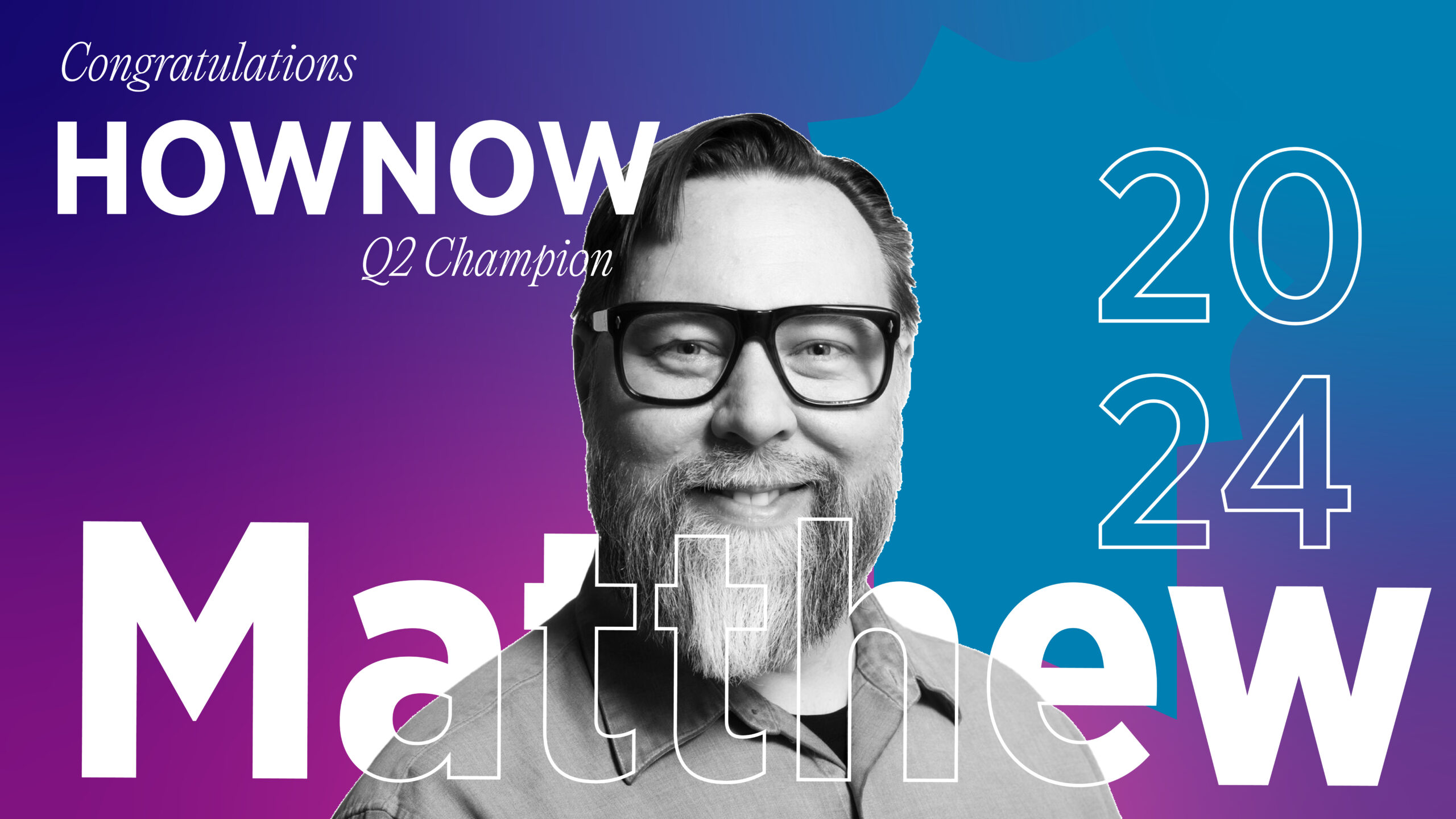
Matthew’s Rewards and Recognition banner
Meditating on the idea of Ankrom Moisan being a ‘choose-your-own adventure,’ Matthew has a lot of advice for younger, emerging professionals. He stresses the importance of asking questions, stating that people who ask questions “create opportunities for us all to grow, which is something we must be careful not to lose in the new world of remote work.” He goes on to say that it’s important to be a helper and a problem solver, as “a willingness to get involved and do what needs to be done will serve one well through all the different parts of their career. People look for helpers and problem solvers – if you focus on being one, you will be presented with many opportunities.”
Some of those opportunities should not be taken for granted according to Matthew, such as the opportunity architects have daily to make an impact on the world around us. “Something that I try to impart on younger staff members who work with me is that we are literally changing the world and changing our environment in so many ways,” he said. “It’s important to remember that we can do amazing, difficult things, even if there are problems and roadblocks along the way.”
Undoubtedly, Matthew uses Ankrom Moisan’s HOWs to overcome any roadblocks that cross his path, allowing him to continue to make a difference to the world around him by providing quality housing to those who need it.
Six Lessons Inspired by 2024 DJC Women of Vision Honoree Mariah Kiersey
Held annually, the Daily Journal of Commerce (DJC) Women of Vision award recognizes and honors women who are shaping the built environment with their technical skill, leadership, mentoring, community involvement, and creation of opportunities for future generations of women in the industries.
Nominated by her peers, Senior Principal and Office/Retail/Community Studio Co-Leader Mariah Kiersey was selected by the DJC as an honoree for her contributions to Ankrom Moisan and the greater Portland community.
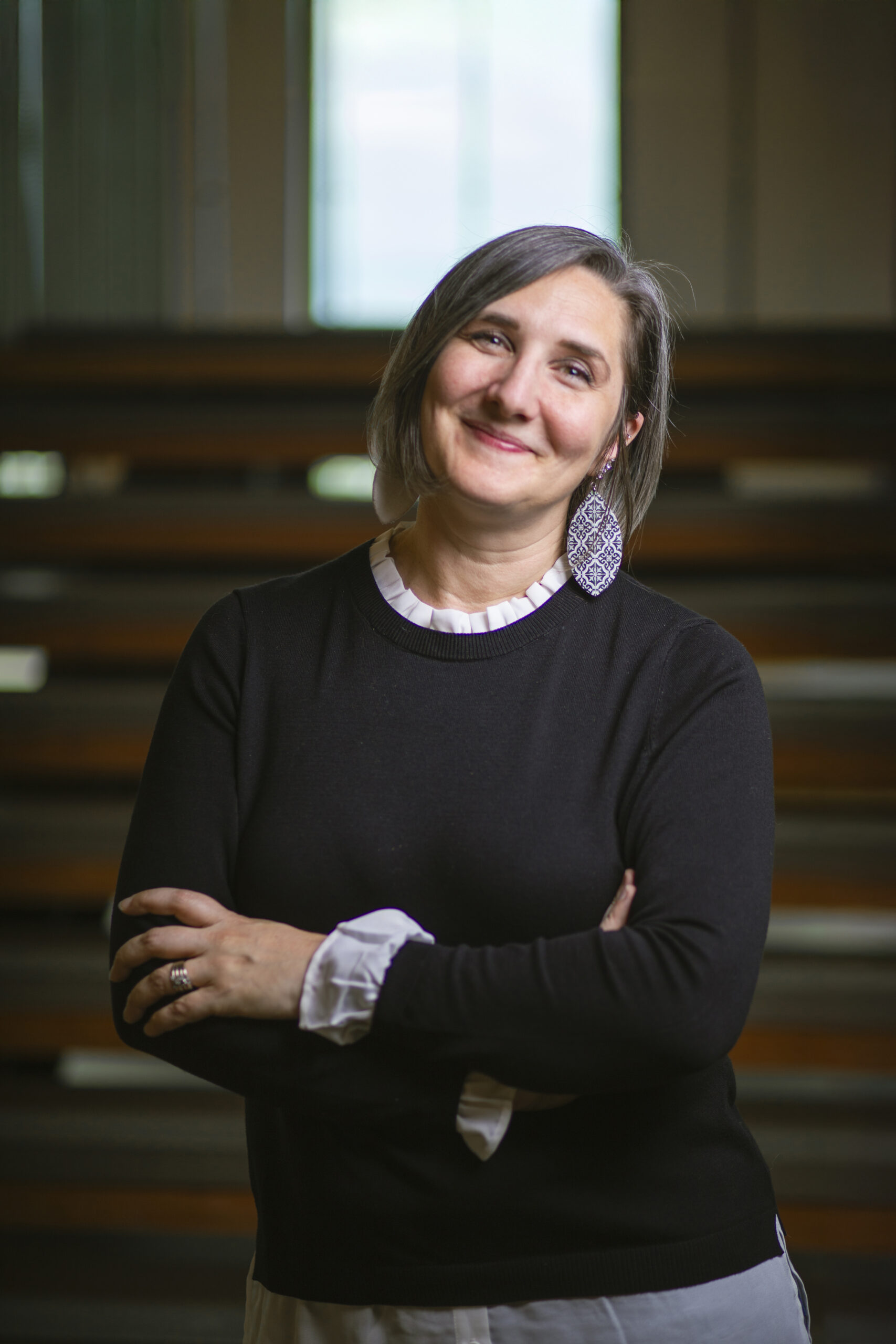
Mariah Kiersey celebrates her recognition as a Woman of Vision in Ankrom Moisan’s Portland office.
The epitome of a strong female leader, Mariah consistently demonstrates exceptional leadership, creativity, and dedication to both her craft and team. According to Murray Jenkins, Vice President of Architecture, “her ability to inspire and guide her team has significantly contributed to our firm’s success and reputation in the industry. She consistently demonstrates a commitment to excellence and a passion for mentoring others.”
However, Mariah’s contributions to our firm extend beyond her role as Co-Leader of the Office/Retail/Community studio; she is a trusted colleague and an inspiring leader who fosters an environment of innovation and inclusivity.
Within Ankrom Moisan, Mariah is “one of those rare architects who have an incredible amount of grit,” said Dave Heater, President. “This shows up in how hard she works and how much she cares about doing great work for her clients and helping those on her team learn and grow.”
One of her many contributions to the firm in this sense are the lessons she imparts – knowingly or unknowingly – to the rest of the firm. Here are six lessons on how to be an employee of vision, inspired by Mariah and her award-winning work ethic.
1. Get Involved
Mariah is a passionate advocate for community health, often volunteering her time and expertise to support local initiatives aimed at providing essential services to individuals facing mental health challenges. Her work in designing and developing behavioral health facilities reflects her deep understanding of the critical role that well-designed spaces play in supporting mental health and wellbeing.
Her involvement with the community extends beyond her professional responsibilities, as she consistently engages in various community initiatives and volunteer efforts. For example, she sponsors a local family each year around Christmas, providing the children with gifts and toys.
It’s through her community involvement that Mariah exemplifies “the qualities of a true leader who is dedicated to making a positive impact both within and beyond her professional sphere,” according to Murray Jenkins.
“Not only does she have an impressive resume of social and community volunteering,” said Alissa Brandt, Vice President of Interiors, “Mariah is someone that, both as a friend and a colleague, will jump in to assist with anything and everything that needs to be done.”
2. Help Others Through Collaboration
Mariah’s commitment to collaborating with her counterparts in Interior Design demonstrates her ability to work seamlessly across disciplines to deliver cohesive and comprehensive design solutions. Her collaborative approach has been pivotal in the successful execution of various projects, enhancing the overall quality and coherence of the firm’s work.
“She will always be there to provide support, guidance, and to honestly jump in and get her hands dirty, taking on any portion of work that needs to be done,” said Alissa Brandt. “Mariah doesn’t ask why. She just asks, ‘How can I help you?’ She treats every ask for help as an opportunity to make us better.”
Her contributions have not only strengthened Ankrom Moisan’s project portfolio but have also played a crucial role in shaping the firm’s culture and values. Her leadership, vision, and collaborative spirit continue to inspire and drive the success of our organization.
3. Set Clear Expectations
One of the notable changes Mariah’s led is the implementation of rigorous project management practices. She has established a culture of excellence by setting clear expectations and standards for design delivery.
“Mariah’s leadership in this area has significantly improved the firm’s project outcomes and client satisfaction,” said Murray Jenkins. “Her meticulous approach ensures that projects are not only completed on time and within budget, but also meet high-quality standards.”
Through her dedication to high standards and her unwavering support for her colleagues, Mariah’s inspired a culture of excellence and continuous improvement at Ankrom Moisan.
4. Participate in Mentorship Opportunities
Mariah consistently gives her time to both local charities and young professionals as a mentor. Her contributions have significantly impacted her colleagues, mentees, and the industry as a whole.
She’s a role model for young professionals in the industry, regularly volunteering her time to provide guidance, support, and professional development opportunities to aspiring architects and designers. She participates in career days, workshops, and mentorship programs, highlighting her commitment to fostering a diverse and inclusive industry.
Her mentorship has helped many individuals navigate their careers and develop their skills, fostering a culture of continuous learning and growth within the firm, resulting in herself being seen as a “go to person at all levels of Ankrom Moisan,” according to Rachel Fazio, Vice President of People.
Within the Office/Retail/Community Studio, she mentors her team members, keeping in mind both the mentoring that she got as a young professional, as well as the mentoring that she wishes she received.
“As a female leader in the firm, Mariah seizes every opportunity to assist emerging professionals, both within the office and beyond,” said Michael Great, Design Director of Architecture. “This dedication is demonstrated by her volunteer work with AFO’s Architects in Schools program and her role as a guest reviewer and contributor at the University of Oregon. She is always willing to share her time and expertise to advance the profession.”
Through these mentoring and leadership efforts, Mariah continues to shape the future of architecture, fostering an environment of innovation, inclusivity, and excellence.
5. Don’t Back Down From a Challenge
According to Dave Heater, Mariah became a team leader “at a young age due to her success at managing some of the most challenging projects for the firm.” Embracing this role with enthusiasm and determination, she was able to foster an inclusive and innovative environment within the Office/Retail/Community studio.
“Mariah has volunteered endlessly at Ankrom Moisan to take on challenges and navigate them back towards success,” said Alissa Brandt. “She steps in to lead teams, clients, and projects.”
In 2021, during a particularly challenging time when the Healthcare studio leader left the firm, Mariah took on additional responsibility as the interim leader of the Healthcare team. She knew that this was a huge lift and that the team/firm needed a large amount of her time to navigate the transition, but she took the challenge on with grace.
“Mariah never alluded to the fact that this was an enormous task,” said Alissa Brandt. “She stepped up and took charge, leading with grace and poise, keeping the entire team moving forward. Without her leadership and commitment, we may not have been able to maintain this extremely important studio in our firm.”
“She consistently goes above and beyond on every project and in every situation,” said Michael Great. “Mariah’s leadership, tenacity, and extensive experience has earned her the respect and admiration of many both inside and outside of Ankrom Moisan. Her unwavering commitment and dedication every day inspires all of us to do better and bring our full selves to every project.”
6. Hold Yourself and Others Accountable
Mariah’s leadership has had a lasting impact on the firm’s operations and has set a benchmark for future leaders to aspire to. Her ability to hold her project managers accountable has instilled a sense of responsibility and ownership across the team. She encourages open communication and transparency, allowing for proactive problem-solving and continuous improvement.
This accountability framework has not only enhanced project performance, but also built a culture of trust and mutual respect within the team.
She’s been instrumental in driving significant changes within the firm, particularly through her rigor in project management and her ability to coach, mentor, and hold her project managers accountable to high standards.
“She created this accountability revolution well before we had studios,” said Dave Heater. “Mariah began tracking key financial metrics on her own to show her team how they were performing. Her efforts are now being replicated at a firm level.”
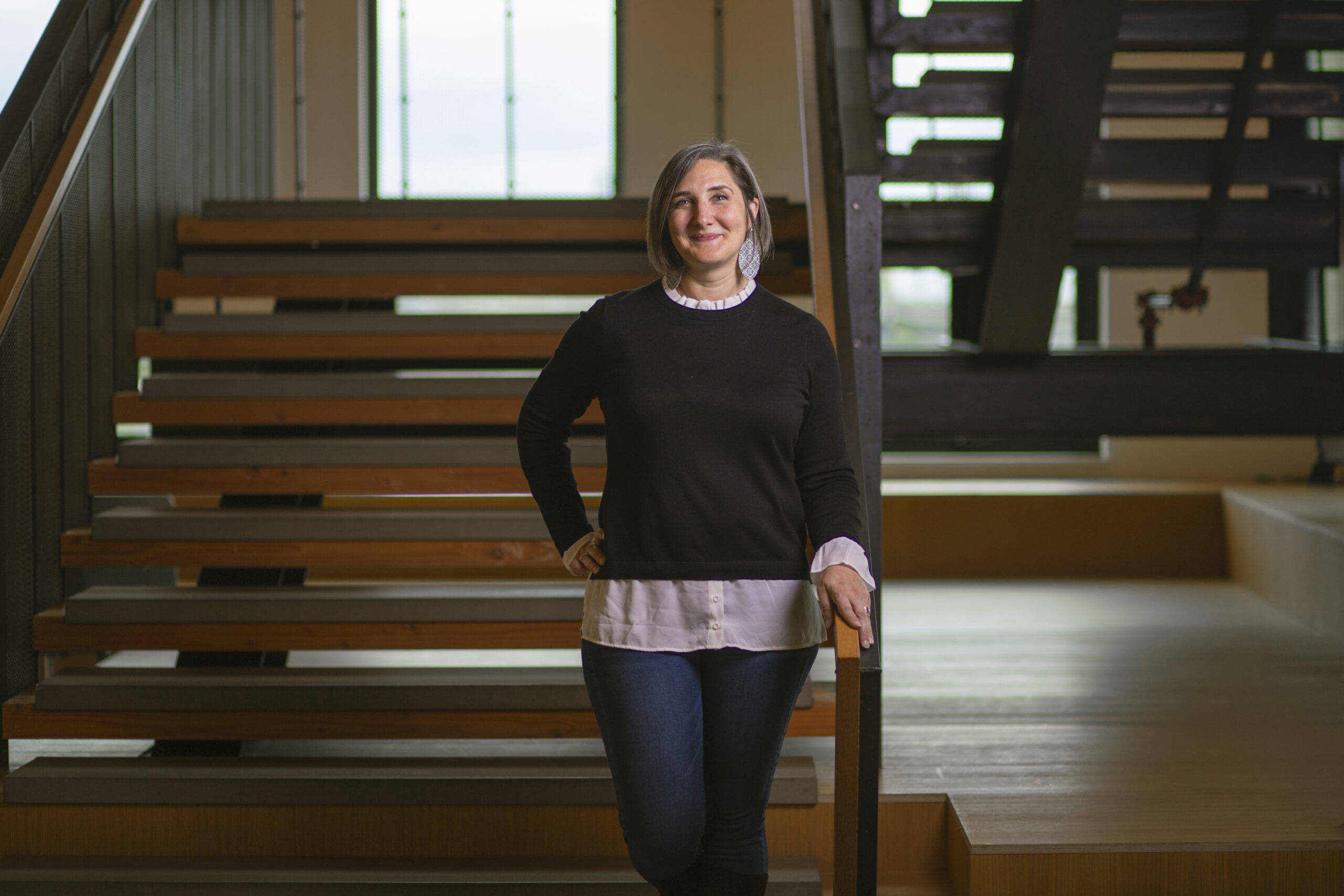
Mariah at the base of the stairs in Ankrom Moisan’s Portland office.
Congratulations, Mariah, on your recognition as one of 2024’s Women of Vision! You are a role model to the firm, embodying how to make deeper connections and be a better person to work with daily. We are all lucky to call you a coworker.
Employee Spotlight: 2024 Q1 Employee Ownership Champion Stephanie Hollar
Honored as a champion of employee ownership within the first round of Ankrom Moisan’s rewards & recognition program, Stephanie Hollar sees the greater whole of our efforts and embraces teamwork to make a difference.
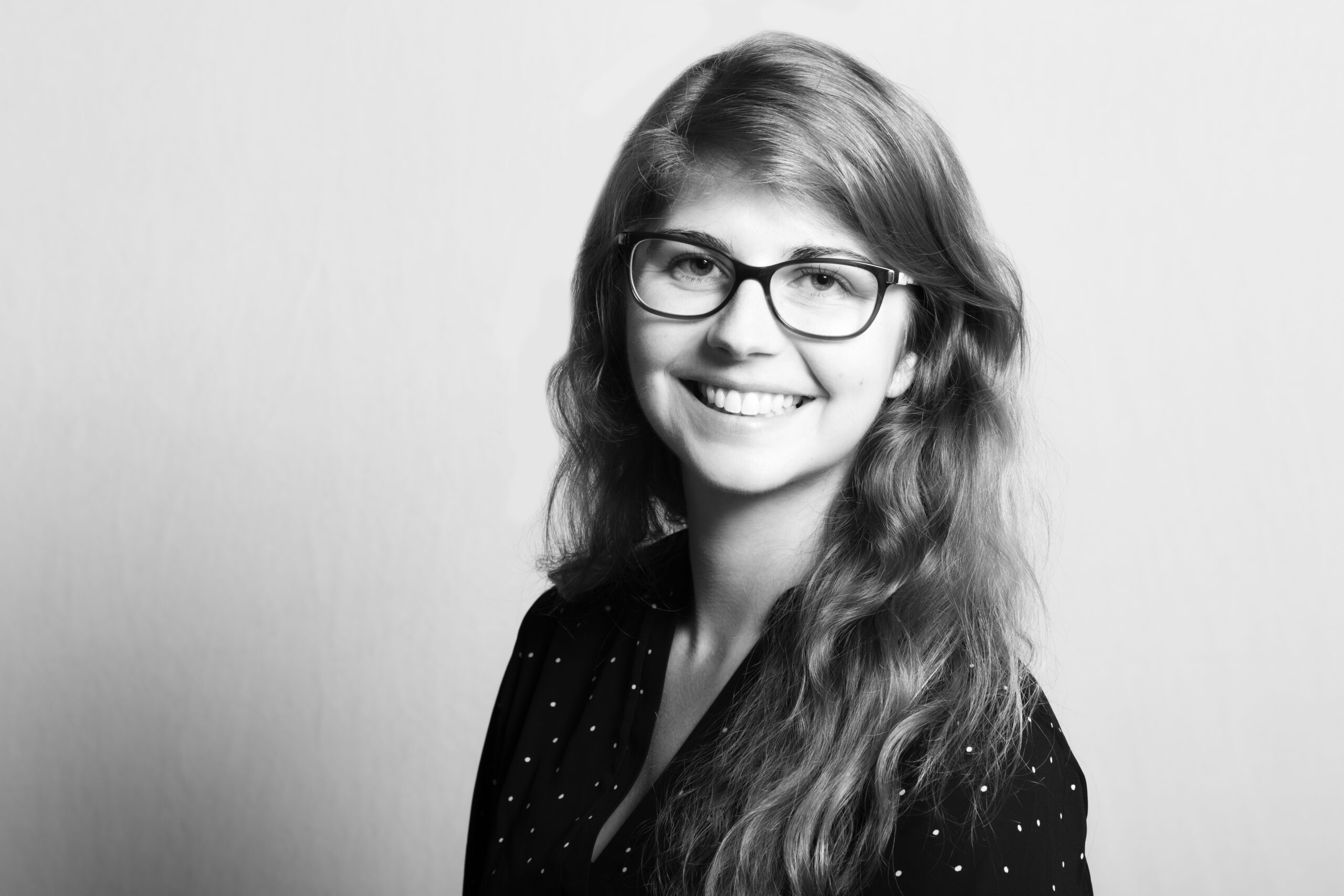
Stephanie Hollar’s headshot.
Stephanie first came to Ankrom Moisan at the behest of her then-boyfriend (now husband). It was over a decade ago, back in 2013. She was living in Washington state and wanted to make the move down to Portland “My husband recommended that I reach out to Ankrom Moisan because he knew Amanda Lunger,” Stephanie explained. “They were friends in college, and since he knew I was interested in housing, he thought this would be a good spot for me. I sent my portfolio to Amanda, and that’s how I got my foot through the door.”
When she started at Ankrom Moisan, getting through the rest of the door, Stephanie recalled that it was a really exciting time. “We were doing lots of projects in Portland, and there was a lot of hiring. We hired quite a few people who were just right out of college,” she said. “It was fun to start with a bunch of people who were in the same boat as me, carrier-wise.”
In addition to the excitement of starting her first post-grad job with a group of similarly aged coworkers, Stephanie found lots of stimulation in her work. She described her first project, Goat Blocks, as “cool, interesting, and exciting,” due to its location just a quick bike ride away from where she was living at the time. Now, over ten years later, Stephanie is still just as passionate about the work she does as a Technical Designer, doing CA (Construction Administration, AKA Administration of the Contract for Construction) work on affordable housing projects. “I just love the reason behind doing affordable housing,” Stephanie said. “There’s absolutely a housing crisis going on. Being able to feel like you’re doing something to help fix that is really nice.”
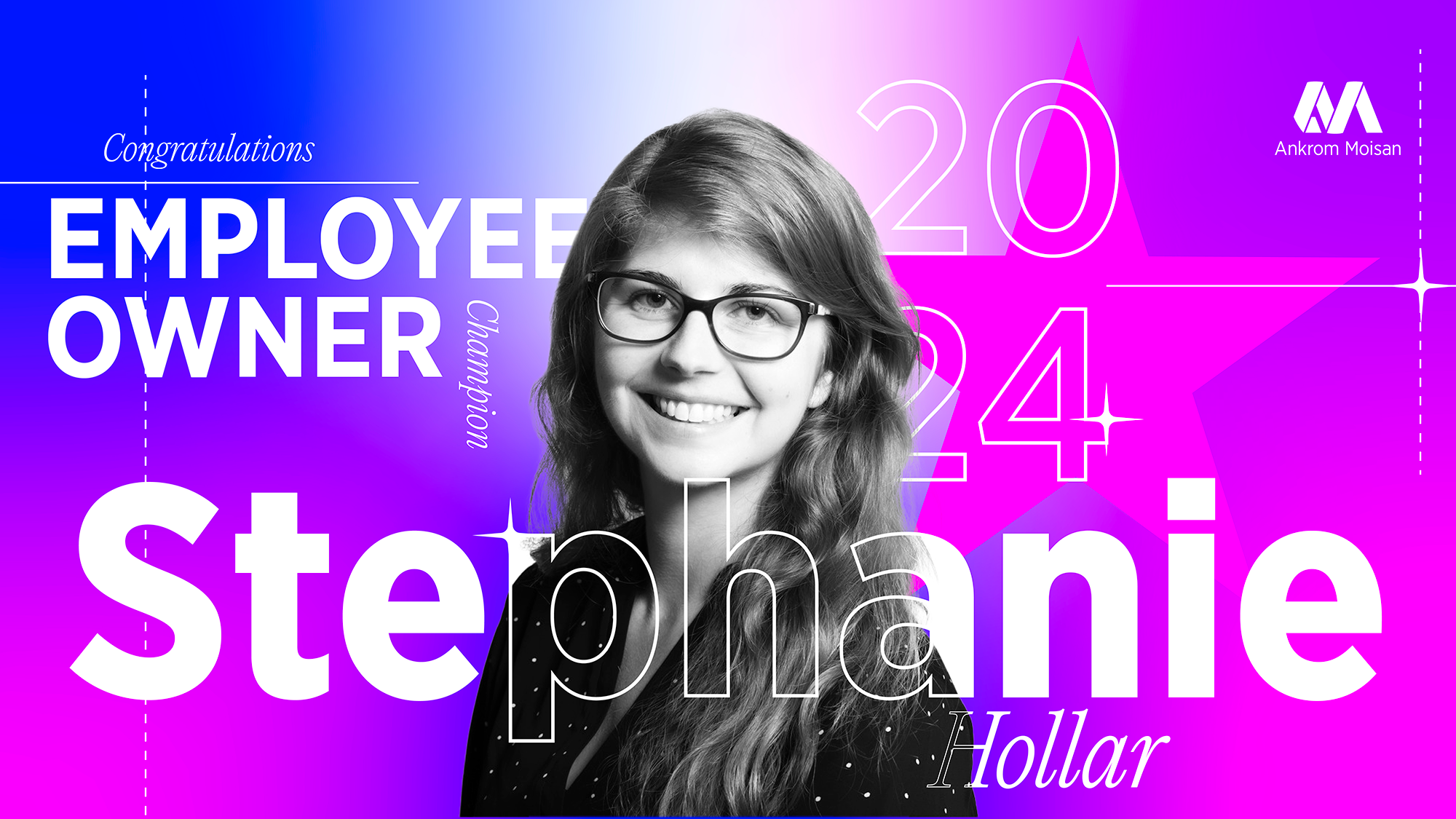
Stephanie’s recognition banner.
Having worked consistently to make an impact on the housing crisis with Ankrom Moisan’s affordable housing team, Stephanie knows that she’s grown a lot in her time at the firm. “I’ve become a lot more confident over the years,” she said. “Confident and more comfortable asking questions and stepping into conversations, especially as a woman. It can be hard to bring your voice to the table when it’s all just men, but that’s something I’ve become more comfortable and confident with, with age and experience.”
Stephanie is a groundbreaker in holding space for women in architecture, leading research into the consequences of gender disparity in the industry as part of Ankrom Moisan’s 2023 Do Good Be Well research scholarship program. Her collaboration with Amanda Lunger and Elisa Zenk, titled “Where are the Women,” revealed six key challenges faced by women within the industry, and proposed solutions to boost equity and support women in architecture.
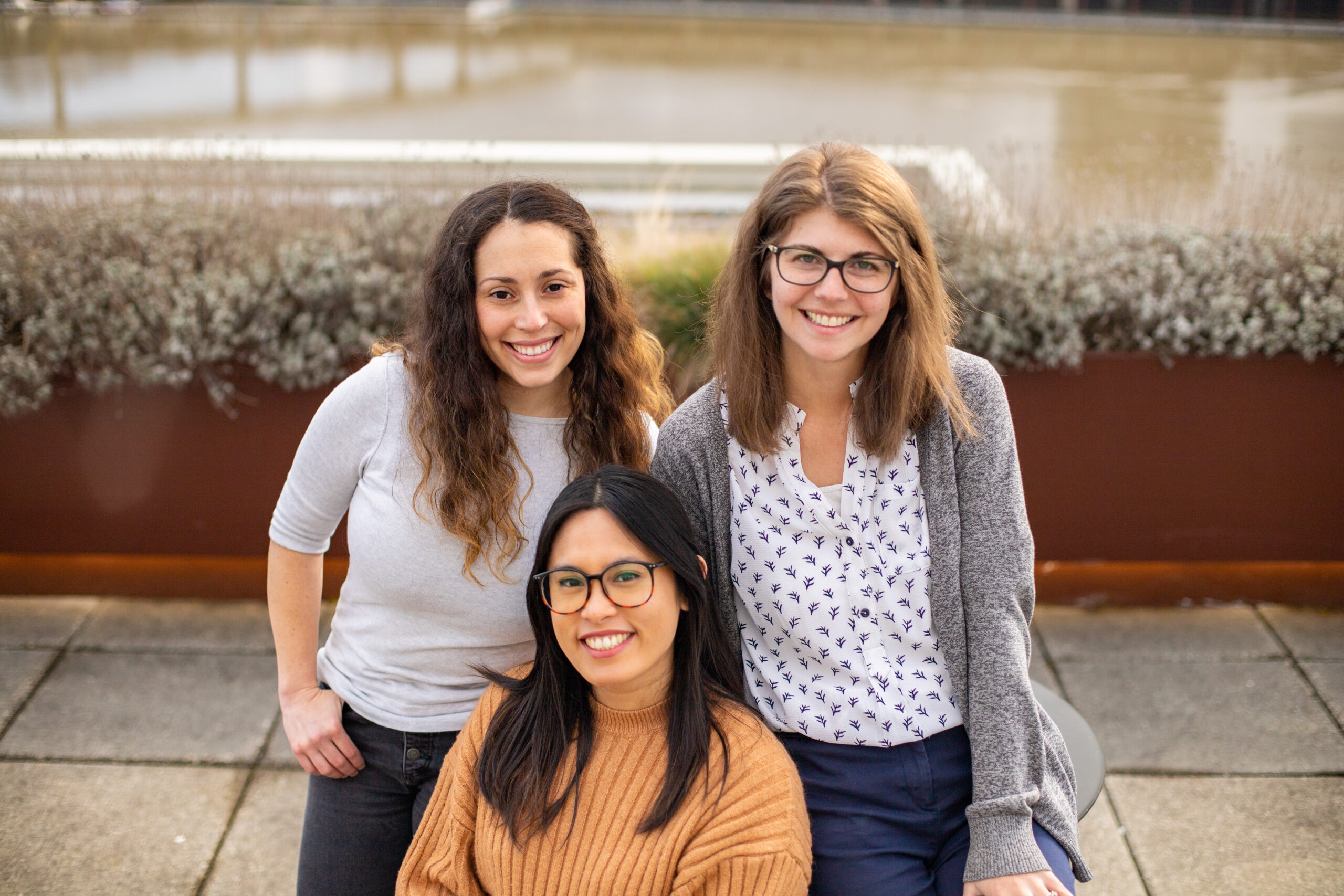
Elisa, Amanda, and Stephanie together in the Portland office, from their Do Good Be Well research project feature.
It was that spirited drive and initiative that led to Stephanie being nominated as Ankrom Moisan’s Employee Ownership Champion. When asked what ’employee ownership’ means to her, Stephanie revealed that it means “taking responsibility and ownership not just for your work, but also for your team’s work.”
Making the point that a document set is not created by a single person on their own, but rather by a team of people, Stephanie looks at the bigger picture, seeing how each team member contributes to the greater whole of a project’s design. “It’s important to recognize that it’s all of us together. We need to own that. That’s how I think of employee ownership; what we produce is our work.”
Stephanie’s Employee Owner Champion Nomination Video
Stephanie found out about her acknowledgment when she received a ‘congratulations’ text from Amanda. “I didn’t understand what she was talking about,” Stephanie admits. “Then I saw it on the Insider. I was very flattered and honestly a little bit shocked. I don’t have a project team I’m working with, so I didn’t think that this was something I had a chance of winning. I’m very appreciating of the nice words from everyone who nominated me and recognized the kind of work I’m doing, even if it’s just me doing it right now.”
Once the shock of winning subsided, Stephanie began to think about the future of what the Rewards & Recognition honor could be. “I really hope that this program encourages us to acknowledge when people do a job well done. Having a culture that values employees who do a good job and a program to celebrate that is a good thing that we should keep moving forward,” she shared.
Called out in her nomination video by David Kelley for leading the first ‘Lessons Learned’ with the housing studio, Stephanie stepped up to share what different teams can do to support CA work. The studio wanted to have some informative discussions with groups that weren’t in the same studio, discipline, or practice as them to provide updates on what’s going on in the office. “I put together a list of dos-and-don’ts for construction administration (CA) and other things I found helpful for what I’m doing,” Stephanie said. “I was trying to provide knowledge about what I thought was good and what I thought could be worked on. I think it led to some good conversations, because everybody has their own opinions on the best ways to do certain things. It was a productive work session that I think everyone appreciated, since it was the first of its kind.”
Being able to communicate to different studios how to support the CA work she does was huge for Stephanie. As the only one doing CA for the Shea project she is working on, she has a lot on her plate. She revealed that one way she’s supported in her role is by checking in with Don Sowieja, her direct manager, every other week. “He has a lot of trust in me. It helps me be successful, knowing I can come to him,” she shared. “He provides me with guidance but doesn’t overstep. He allows me to do work that maybe I haven’t done before, but he trusts I can do it well. That’s something I find very supportive – having trust as an employee.”
Outside of work, Stephanie continues spreading support by volunteering for ACE, and Architecture, Construction, and Engineering after-school mentorship program for high school students in the Portland area. “It helps me feel rejuvenated and excited about where architecture is going,” Stephanie said. “It’s fun to see students get excited about what we do. They come up with some very cool designs and ideas, so seeing the next generation really inspires and excites me.”
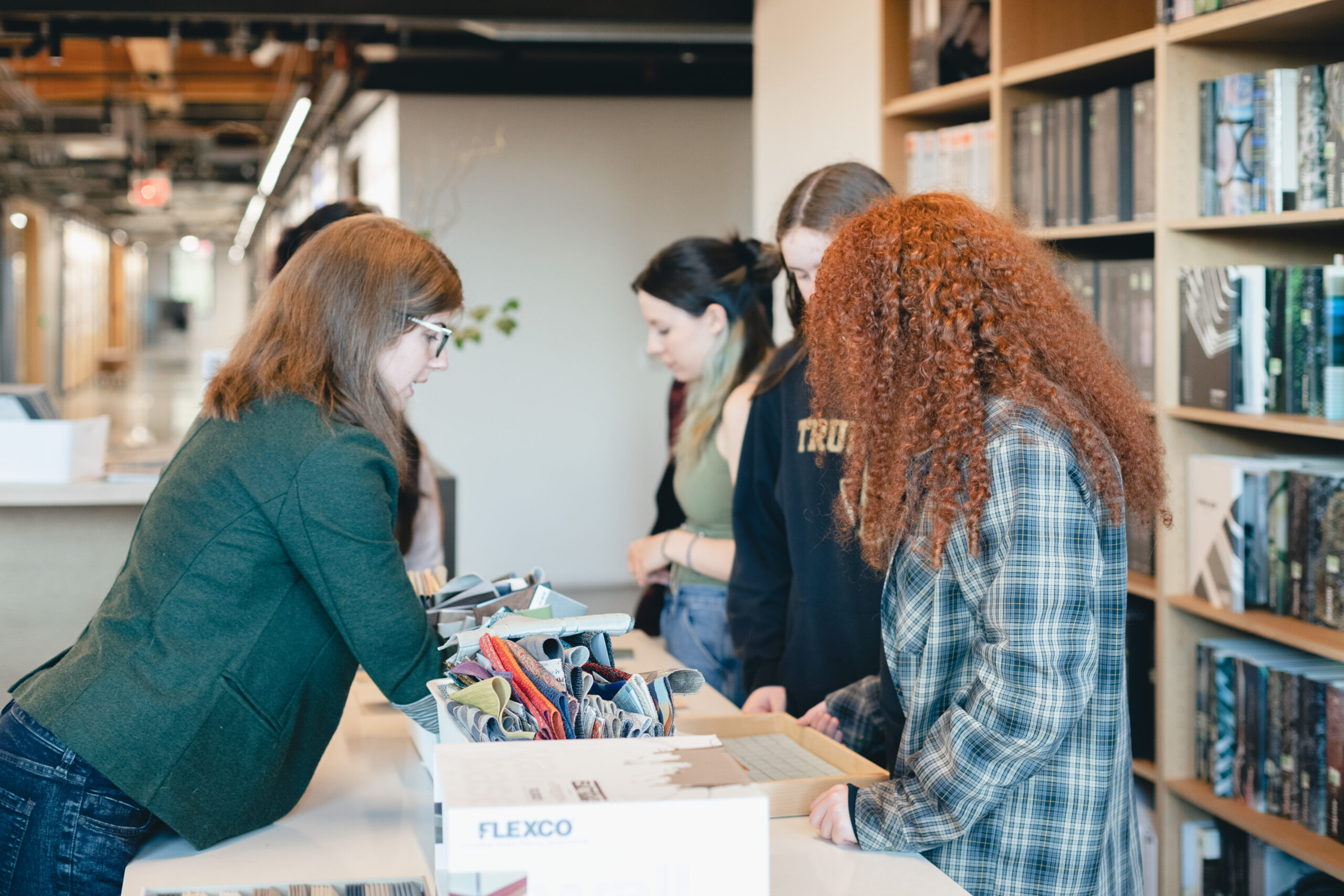
Stephanie with the ACE group in the materials library at Ankrom Moisan’s Portland office.
Her advice for the next generation of architects and interior designers is simple, yet impactful. “There are no dumb questions,” she said. “When you’re so young and first starting your career out, you think that school prepares you for everything in the real world, but it really doesn’t. It gets your mind ready to absorb all the information that you can’t learn in school.” Stephanie encourages young professionals to ask questions and absorb all the knowledge they’re receiving. “Don’t pretend you know everything right off the bat, because that’s not true,” she emphasized. “Every day I’m learning new things. Be open to always learning more.”
Going back to the idea of employee ownership, Stephanie’s second lesson for young professionals just starting out in their careers is that architecture – at least here at Ankrom Moisan – is a team effort. She emphasized being open to collaboration, saying “It’s not just one person doing everything. I really encourage everybody to have a mindset where they’re working as a team and being a team player.”
Working together as a team means many challenges are overcome quicker, and with less difficulty. That doesn’t mean that there will be no challenges, though. For Stephanie, the biggest challenge she’s faced in her position is leading a team that’s constantly changing. “Trying to keep things moving forward while everything in the background is shifting around you is really difficult,” she said. “To overcome that, being able to rely on other people in the office for guidance was huge. I had to come up with a work plan so that even if my team is changing, I still have a path to move forward.”
Just over the horizon is a new challenge for her, though – motherhood. “I’ll be confronting another big challenge moving forward, which is balancing both motherhood and working. I’m really curious to see how that will work out, moving forward,” Stephanie said. She plans on using her recently earned sabbatical to take an extended maternity leave, adjusting to her new life as a mother before coming back to work. Though this challenge will be one she must face herself, without a team, Stephanie knows that all of Ankrom Moisan is supporting her in her journey through this new stage of life. As the Employee Owner Champion, she knows that she is never truly alone here.
Employee Spotlight: 2024 Q1 HOWNOW Champion James Lucking
Acknowledged in the first wave of Ankrom Moisan’s Rewards & Recognition program winners as a HOWNOW Champion, James Lucking embraces and celebrates AM’s culture, going the extra mile to embody the firm’s HOWs.
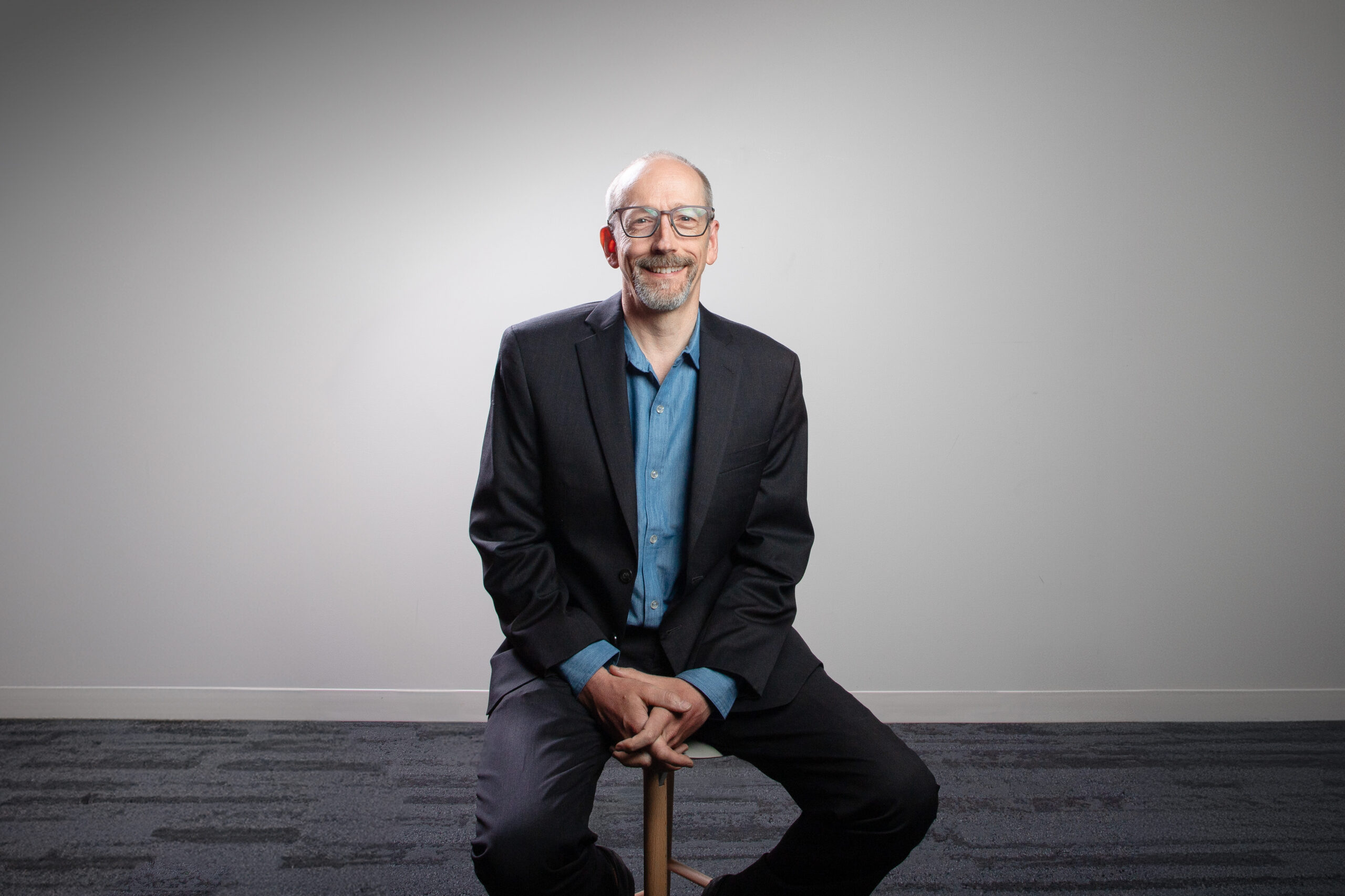
James in Ankrom Moisan’s Seattle office.
As a Technical Advocate, James’ primary role is quality control. “The bottom line is that I have to ensure the quality of deliverables when they pass through my hands,” James explained. “The unique thing about the way we do it at Ankrom Moisan is that the other Technical Advocates and I get assigned to a team and go through the entire process with them.” In this sense, James is there every step along the way. “I’ll do review at each milestone,” he elaborated. “I’m also a resource for when people want to ask quick, one-off questions.”
Because of his role as a resource for project teams throughout the design process, James is deeply immersed in the firm’s culture. He knows the ins and outs of each studio and helps to streamline the project design process for each of them. His work spans project types, but his favorite is renovations. “I enjoy working on projects with an existing component as well as new,” he shared. “When we have a project where we’re saving a historic facade and building onto it, those are always interesting to me. The intervention between the new and the old is very interesting to me.”
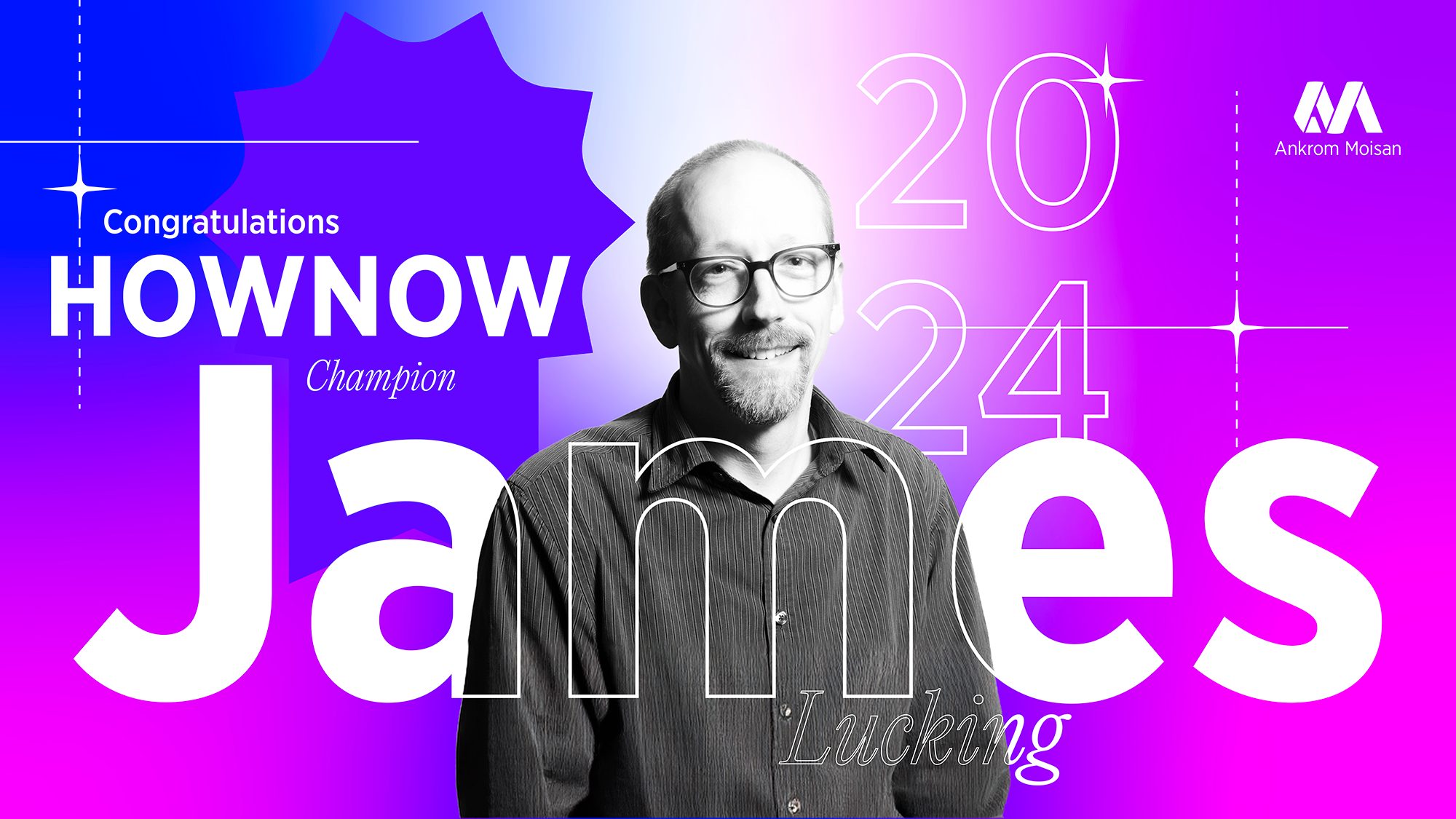
James’ HOWNOW Champion Recognition banner.
James first came to Ankrom Moisan around a decade ago, enticed by an open position that would ultimately become his. “I saw an opening for a Technical Advocate (TA) role and thought it was a good fit for my personality and the type of experience I had in my career, which has been much more technical than design-oriented,” he said. When he first started, Ankrom Moisan was still operating out of an office in Pioneer Square. “The space was pretty full, and we were growing really fast. It was quite a roaring economy at the time, it was great to experience this super high-energy design firm.”
“It was a highly collaborative environment,” he recalled. “We would have pin-ups around once a week. At other firms, people typically present their work in a general, architectural way. Ankrom Moisan does it differently. People are very directed and focused on what they’re contributing, and always open to suggestions. People would say ‘hey, we’re working on this and have this specific challenge’ and everyone would give ideas. It was a new way of doing things.”
Though James and the rest of Ankrom Moisan worked hard back then, they also embraced our HOWs by having fun with it. “We had a lot of celebrations of milestones. When the team completed some SD or DD milestone, they’d all go out to lunch and invite the TAs on the project,” James said.
Over the course of his career, James’ areas of focus have changed slightly. “I came with a lot of experience in building enclosures and exteriors,” he explained. “I’ve gotten to learn quite a bit about various codes, how they work together, and how to quickly find the right answer to a problem within the code. Sometimes it can be a little challenging.” He’s learned that if you think you’ve found the answer you’re looking for, but haven’t looked in at least two different places, there’s a good chance it’s not right.

Illustrated graph of Ankrom Moisan’s HOWs.
Nominated by Cara Godwin, Associate Principal, Murray Jenkins, Vice President, and David Kelley, Senior Principal, James found out about his recognition as a HOWNOW Champion the day after it was announced on SAM. “I felt really flattered,” he stated. “It felt good to have someone say that they thought I embodied the firm’s values and methods.”
Explaining how he embraces Ankrom Moisan’s HOWs, James said that he doesn’t see any other way to do it than to look at them frequently. “I look at the HOWs and ask myself if one of them will help me bring my best self to the problem I’m facing. They usually help with challenges when you’re struggling with something,” he stated. “To step back for a second and refresh your understanding of the HOWs is kind of like asking ‘what would David Kelley do?'” It helps put things in perspective. In James’ view, adhering to the firm’s HOWs ensures that Ankrom Moisan’s operations run smoothly. “We created the HOWs to try and make our firm really awesome, so if we look at the list and pull the rope in the same direction, so to speak, it helps everyone in the firm.”
James’ HOWNOW Champion nomination video.
The easiest HOW for James to embrace is simply being himself. “Being a technically oriented architect, this role is tailor-made for me,” James shared. “I feel like I can really be myself here, whereas at other firms I haven’t felt that way. The architectural field can be so design-focused that you can feel unworthy if you’re not a creative conceptual designer or architect.”
While he’s been with Ankrom Moisan for over a decade now and a lot has changed since he first started, James claims that the hardest HOW for him to follow is embracing change. “I can tend to resist change when it comes along, he revealed. “I always have to remember that we’ve got a bunch of really talented people here who are very ambitious and that there’s going to be changes that will come out of that, and that’s a positive thing.”
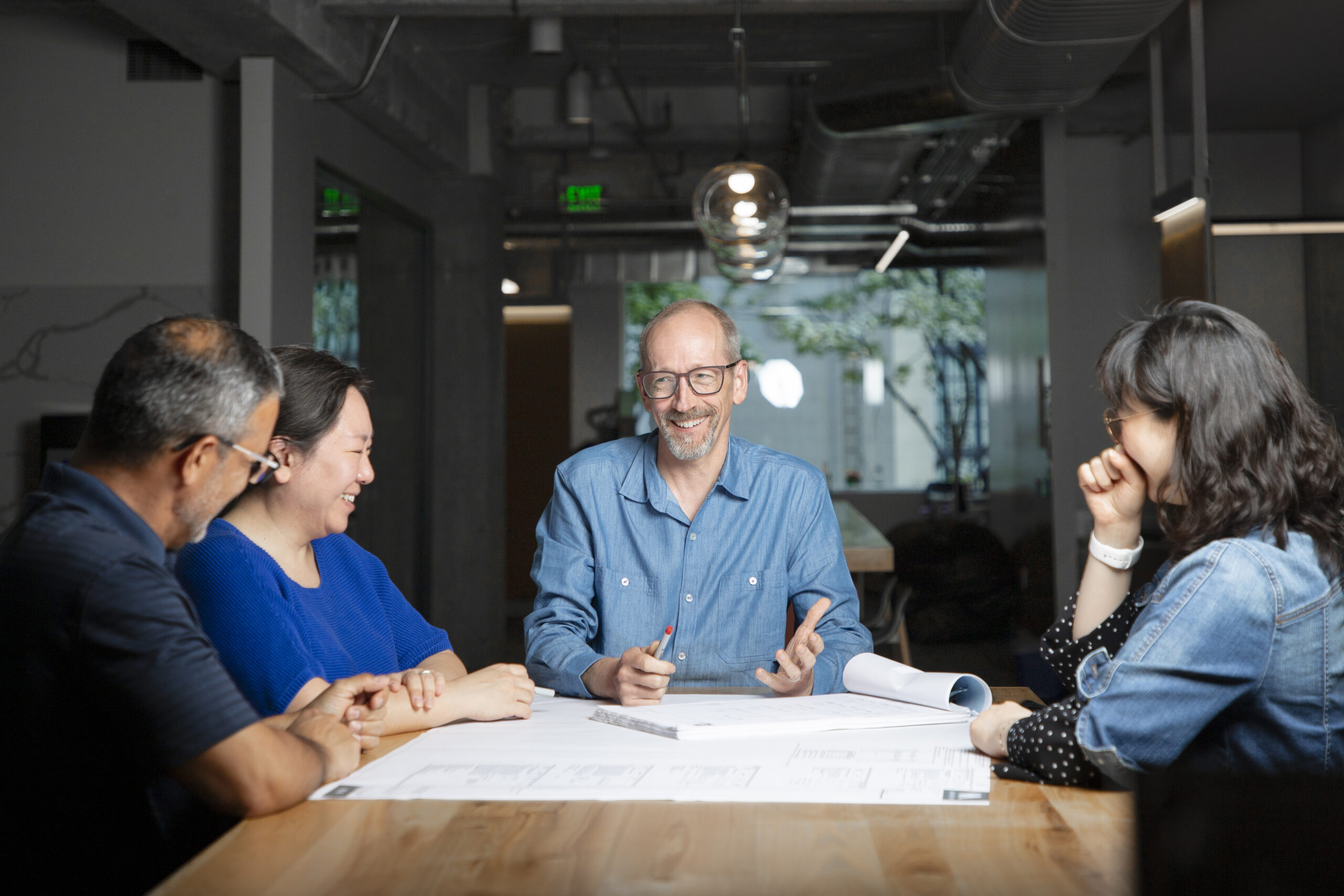
James working with Omar Torres, Chie Yokoyama, and Nancy Kwon (Left to right).
As a TA, James is a member of TAG, the Technical Advocate Group, where he does his best to bring Ankrom Moisan’s HOWs into their daily operations. Within TAG, specifically, James recognizes that there are many advocates for change that help him adjust to and embrace change. “The hard changes for me don’t come from the internal TAG group, because we discuss them and how to get onboard with them,” James explained. Rather, it’s technological changes that are difficult to adapt to. “The second that IT changes something, I have to step back and remind myself ‘this is changing for a reason. Those technological changes have gone through a vetting process and are being made by people who want to make things better.'”
Although it’s the HOW that he finds the most difficult to embrace, James finds his inspiration to embrace change in the people he works with. “There are so many talented people that come up with creative ideas of how to solve various problems and ways to add value to a project that the owner might not have thought of themselves,” James said. “I’m inspired by that every day.”
With the future on his mind, James’ advice for young professionals who may just be starting out in their careers and are looking for ways to embrace HOWs – whether they’re their own HOWs or the firm’s – is to keep learning and never be afraid to ask questions. “You’re not going to know it all,” he imparted. “You can still ask questions no matter how far along in your career you are. Architecture is big and complicated, and it’s always changing. Stay humble and always be ready to ask questions.”
Employee Spotlight: 2024 Q1 Design Champion Filo Canseco
Recently honored as Ankrom Moisan’s first-ever Design Champion through the new AM Rewards & Recognition program, Filo Canseco goes above and beyond, pushing the boundaries of graphic design by putting part of himself into his work.
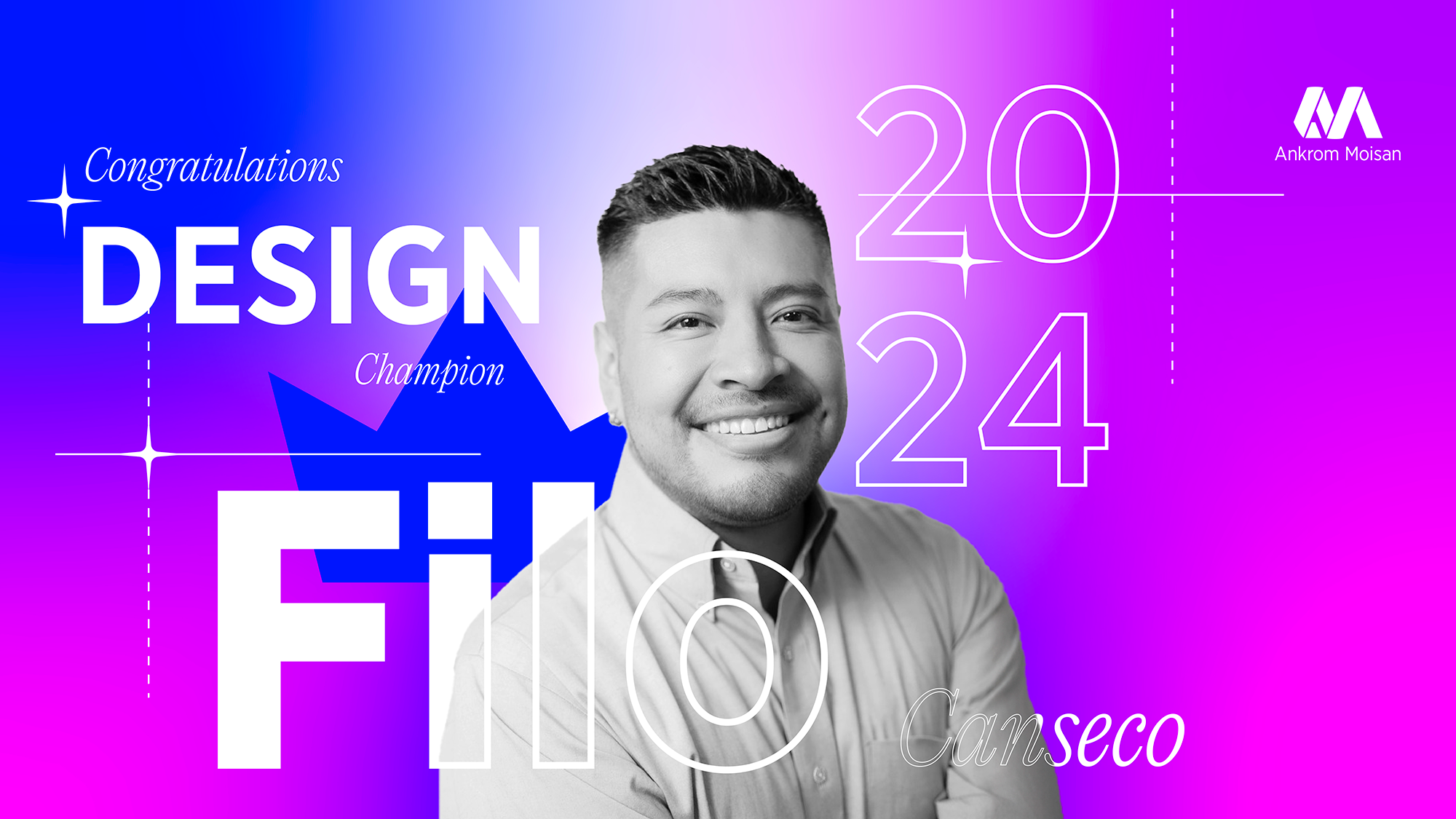
Filo’s Design Champion Banner.
Filo became interested in design at an early age. Coming from a creative family, he was naturally attracted to anything related to art and design, often taking up the modes of expression shared with him by his relatives. “My uncle Aaron, who is an illustrator, introduced me to graphite and chalk early on in my childhood. Similarly, my aunts embroidered, so I learned embroidery,” Filo shared. It wasn’t until later that he realized why his family were passing on their creative abilities. “They knew that because of our family’s immigrations status at the time, having recently become naturalized citizens, they had missed their opportunity to pursue the arts. I was the only one who had a chance of pursuing design in college and as a career.”
Interested in animation and the process of making illustrations come to life, Filo applied to The Art Institute of Portland after high school. He wasn’t accepted at the time, which was “devastating,” but something he’s glad about now. Despite not immediately applying to a college design program again, Filo pursued his passion for design wherever he could. “I created business cards and websites for friends’ small businesses, designed posters for friends in bands, and later picked up photography and videography,” he said. Though he was immersed in creating unique one-of-a-kind designs for friends, he felt that his lack of technical knowledge meant he didn’t qualify as a true graphic designer. “I designed my entire brand identity in Photoshop without knowing much about Adobe’s software. It wasn’t until a friend suggested I start charging for my design services that I considered this as a potential career.”
Filo saw his opportunity to follow his dream and practice design and took it. When he returned to higher education nine years later, it was confirmation that a career in graphic design was indeed meant for him. Even though he already had some experience under his belt, learning the ins and outs of design in an academic setting changed his perspective on his process. “I was captivated by the fundamentals of graphic design, graphic design history, hand-lettering, pottery, digital graphic design, and all its multifaceted realms,” Filo said. “We learned design, we learned what the great classical artists were thinking and feeling, then we broke down their designs to be put back together with a little piece of ourselves in there. That was huge for me. I didn’t understand it at the time, but now I feel that change in approach is what keeps me producing innovative work.”
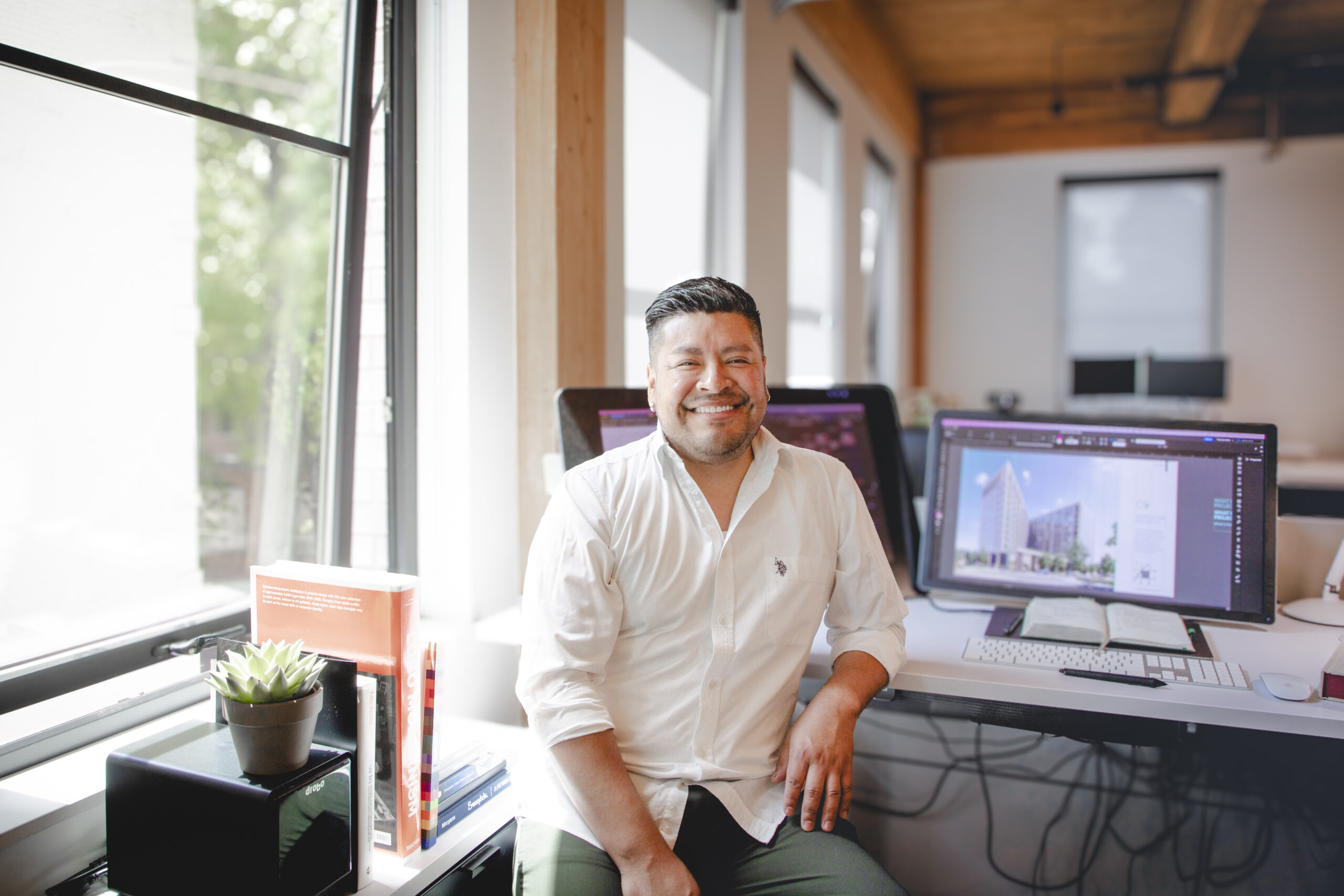
Filo at his desk in the Portland office.
When Filo first started at Ankrom Moisan after graduating from Portland State University in 2022, it was during the pandemic, before AM’s offices instated a two day per week in-person requirement. Because of this, Filo only met a handful of people after starting. “I might have seen Juan Conci or Fernando Abba, our Visualization Managers, once or twice,” he recalled. “It was very lonely. There was nobody in the office. Everything was through Teams meetings.”
Looking back, Filo believes that this slow introduction to the world of Ankrom Moisan worked in his favor. “I was fresh and brand new not only to an architecture firm, but also to having a graphic design job. Pandemic distancing and remote work gradually got me into Ankrom Moisan’s firm culture and what my role was.” He feels lucky to have been able to meet people one at a time, as it gave him a better chance to form connections with new coworkers and assimilate to a new industry than if he had met everyone all at once.
Being able to integrate into AM’s work culture at his own pace deeply influenced how Filo takes a project’s design direction and turns it into an effective deliverable that resonates with the company’s culture and wins new projects.
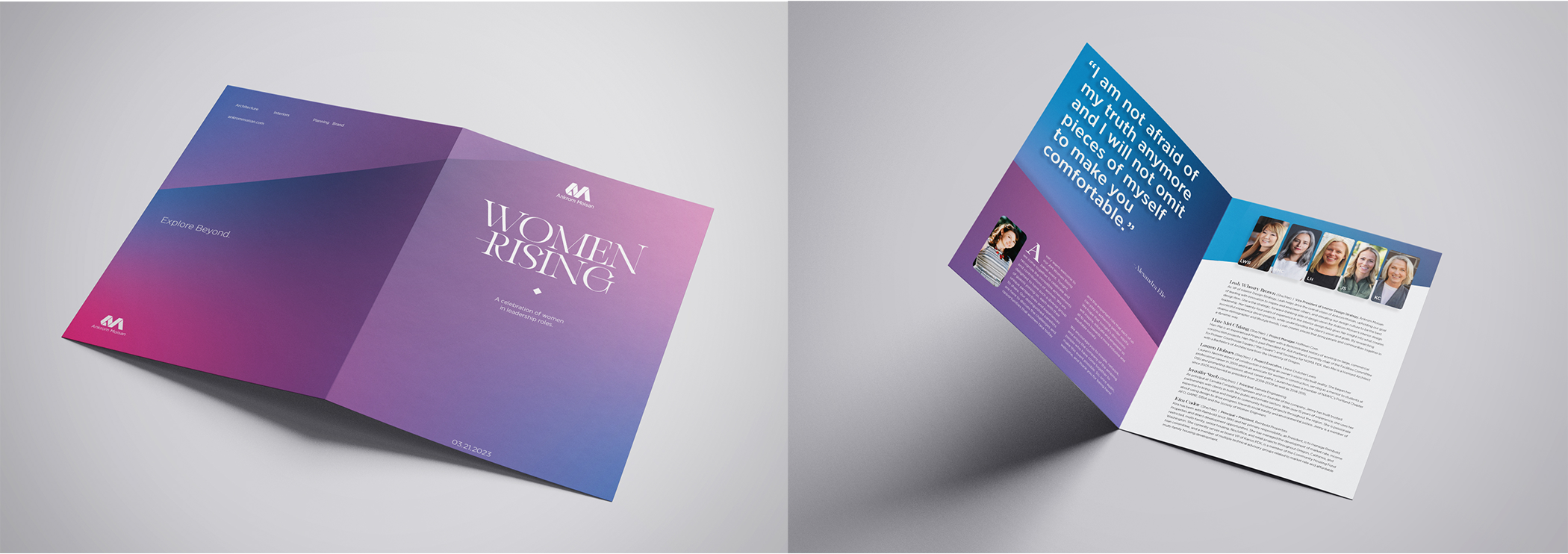
Filo’s design work for the ‘Women Rising’ DEIB campaign
Over the past two years, Filo and his eye for design have grown considerably. He’s grown accustomed to taking the lead on design campaigns, and the responsibility that comes with it, thanks in part to Ankrom Moisan’s unique structure and system of support. “I don’t think I would have grown as fast as I did if Ankrom Moisan’s work culture wasn’t so well established. If I had my first job at a popular downtown design firm, I would have had to go through a lot more hierarchy to get where I am today,” he remarked. “I would have been forced into the box of ‘junior graphic designer,’ and wouldn’t have had the opportunity to grow and realize that I have a lot more capabilities than that.”
Growing into his new capabilities, Filo realized that one of his favorite parts of doing graphic design at Ankrom Moisan is the glowing feedback he often receives after completing a deliverable. “It feels so rewarding to do so much with such a small team,” Filo expressed. “People will come to us and ask what external team we hired, and it’s just like ‘no, we’re just a group of three people taking Ankrom Moisan’s supportive culture and producing this collateral.'” For this reason, the DEIB people-centered campaigns have been a favorite of Filo’s. “These campaigns have really projected me into a space where I can be a graphic designer as well as a creative lead.”

Filo with Emily Lamunyan and Dani Murphy behind the scenes of the AMasterclass DEIB campaign.
When he found out about his recognition as Design Champion, Filo didn’t know how to react. “I didn’t know our president, Dave, would make a video response. I was completely blown away and had to take a moment to really let it sink in,” he said. It was a bit of a surprise. “I found out in a Teams meeting. It was a little awkward finding out and then making my own poster,” he joked. “I guess it had to happen though, since I’m the one doing graphics; there was no way of having somebody else make it.”
Filo’s Design Champion nomination video.
Recognized in his nomination video by President Dave Heater, Vice President Alissa Brandt, Director of Marketing Emily Lamunyan, and Visualization Manager Juan Conci for his willingness to step outside of his comfort zone as well as for his game-changing design work that gives Ankrom Moisan a competitive advantage, Filo shared just how and why his graphic design efforts have had such a big impact on the firm. “Feeling like I can reach out to anyone on the marketing team at any point to get feedback is just golden. I haven’t experienced that with any other job.” Aside from his team’s support, Filo can produce such stellar graphics, putting part of himself into his designs, because of his working process. “My process is about staying curious to ensure the final design is innovative and cutting-edge, not formulaic,” he explained. “I’ve been fortunate to have an innately curious personality. I didn’t realize it until recently, but it’s what helps me out of my comfort zone, allowing me to integrate my lived experience into my designs.”

Filo’s promotional work for the Asian American Native Hawaiian Pacific Islander Heritage Month celebration DEIB campaign.
As one of the first Ankrom Moisan employees to be celebrated through the new Rewards & Recognition program, Filo has high hopes for the future of the program. “I hope and envision that the rewards and recognition program transcends Ankrom Moisan. It’s a great way to show how important and strong our culture is here,” Filo said. “I also hope future champions see the acknowledgement as a milestone and an opportunity to reflect on their career. Being recognized made me step away from work and life and realize how I’ve changed as a professional.”
Reflecting on advice for emerging young professionals in the field of graphic design, Filo had this to offer. “You’ve done the hard work when it comes to learning and educating yourself. Now that you’ve graduated, take it slow. Have fun. I know it sounds cheesy since it’s one of our HOWs, but having fun with what we do is super important to creating balance.” He also emphasized that “making mistakes, as well as connections, is ultimately what helps you get to know your team and everyone else at the firm.”
Taking his Design Champion recognition as a chance to look back at his career, Filo reflected on how everything he learned from his family, high school, gap years, and time at PSU has led him to this moment. “Being a graphic designer has always been my goal, but I now see new opportunities to become much more,” he revealed. “I see myself in a role where I can share my experiences – perhaps as a mentor, a supervisor, or a director. Who knows!” Right now, Filo’s focus is on just enjoying his moment. It’s more than deserved.






